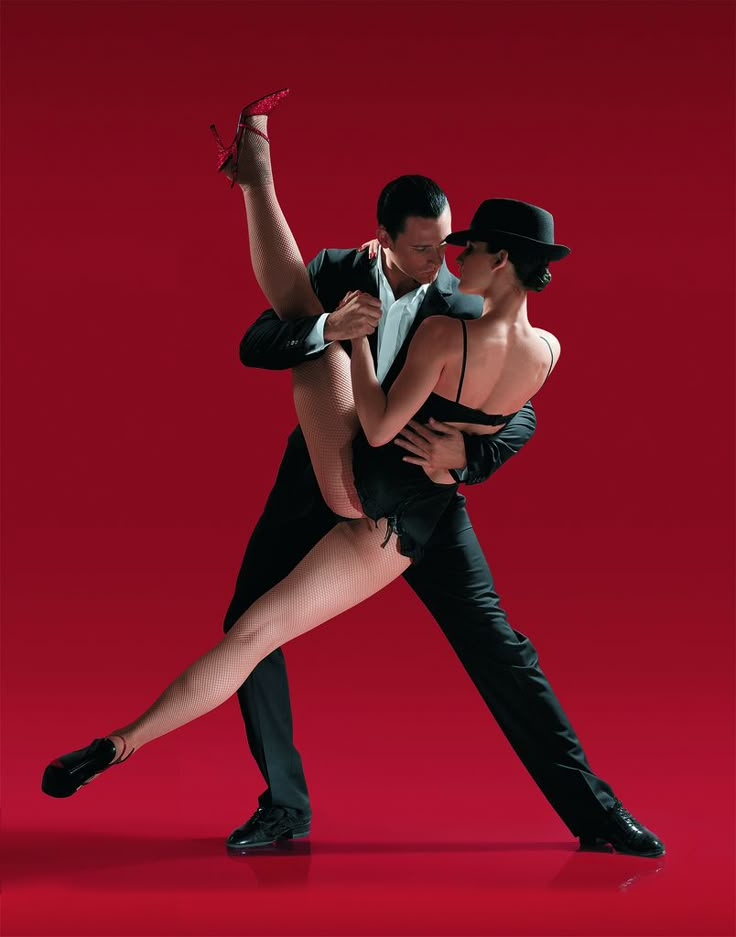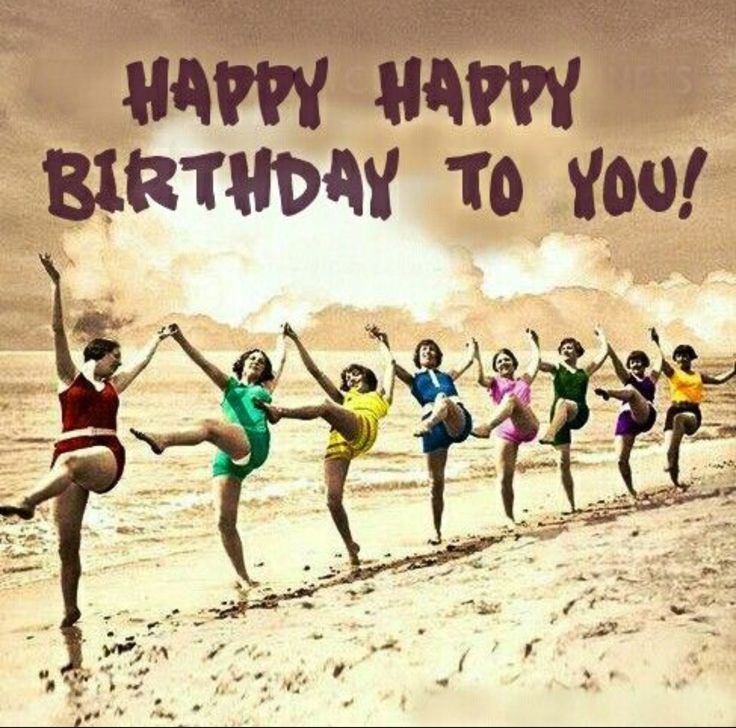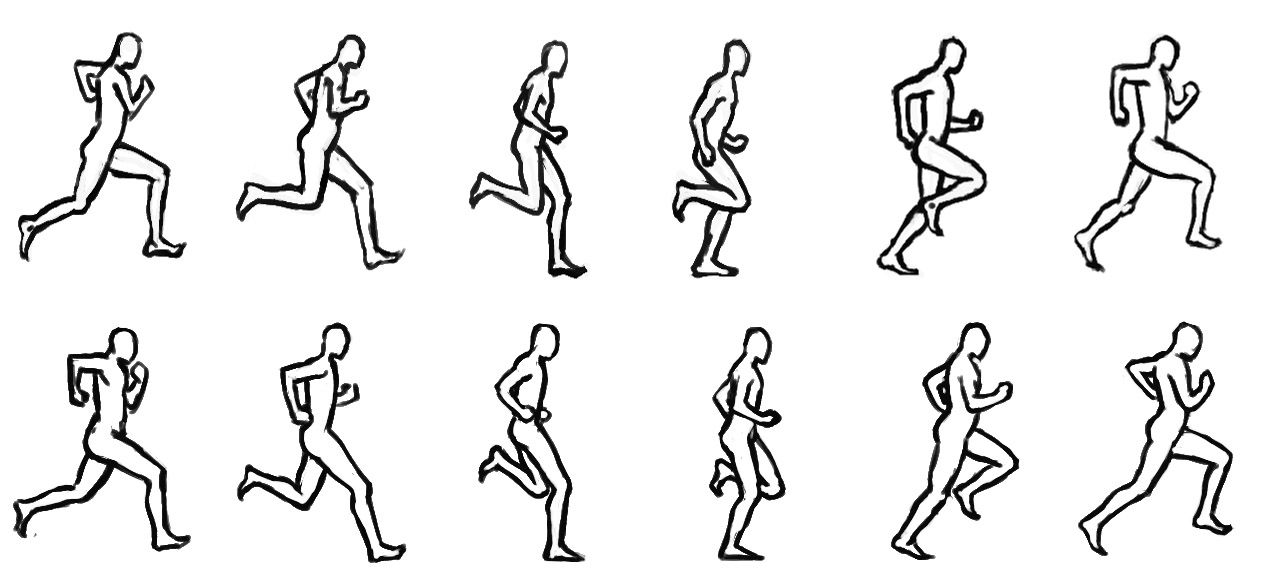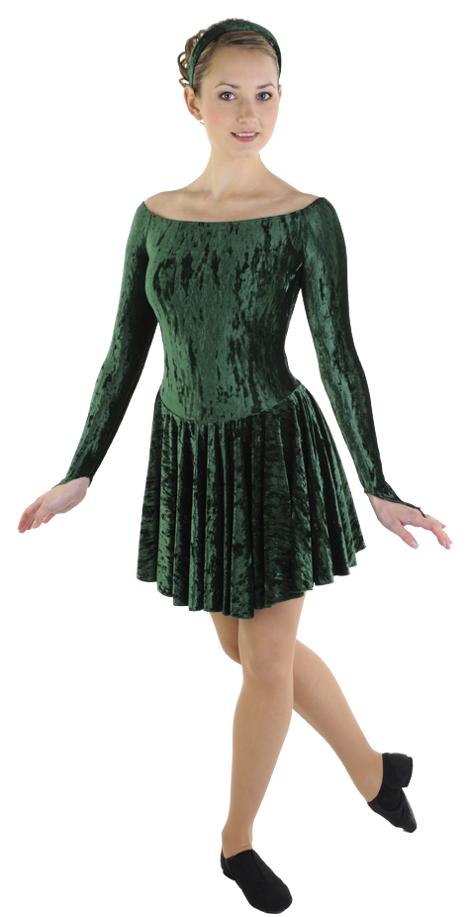Learn how to dance tango in youtube
YouTube as a Source of Tango Information
- YouTube is often used as a source of information for those wishing to learn about tango dancing. YouTube is often consulted prior to observation of tango danced in a social setting.
- Ten of the most frequently viewed YouTube videos identified as (Argentine) tango dancing were examined to determine to what degree the Tango de Salon danced in the milongas of Buenos Aires was represented. The music played for dancing was also evaluated with respect to its similarity to music played in Buenos Aires milongas.
- Except for one video of a demonstration given by milonguero Dany Garcia and his partner Luna Palacios at the Plaza Bohemia milonga in downtown Buenos Aires, the frequently viewed videos do not depict Tango de Salon. Most of the dancing shown in these videos is some representation of tango danced on the stage (Tango Escenario).
- In a few cases, the music used for dancing is music that could be played for social dancing at a Buenos Aires milonga.
However, in most cases, the music used for dancing in the videos is not the Classic Tango music that is played in the milongas of Buenos Aires.
- This survey indicates that tango naïve viewers seeking information about tango dancing will be exposed primarily to Stage Tango, and will infer that the conspicuous movements it contains are part of tango social dancing. Therefore, there is a real danger of misrepresentation of tango dancing that can be obtained by consulting YouTube without guidance.
- The music played for dancing tango on the selected frequently viewed YouTube videos misinforms viewers regarding the characteristics of music played for social dancing in the milongas of Buenos Aires.
- Nevertheless, there are several YouTube playlists referenced here that contain videos of the Tango de Salon danced in the milongas of Buenos Aires, indicating that, with guidance, one can view accurate portrayals of Tango de Salon on YouTube, as well as be exposed to the Classic Tango music used for dancing Tango de Salon.
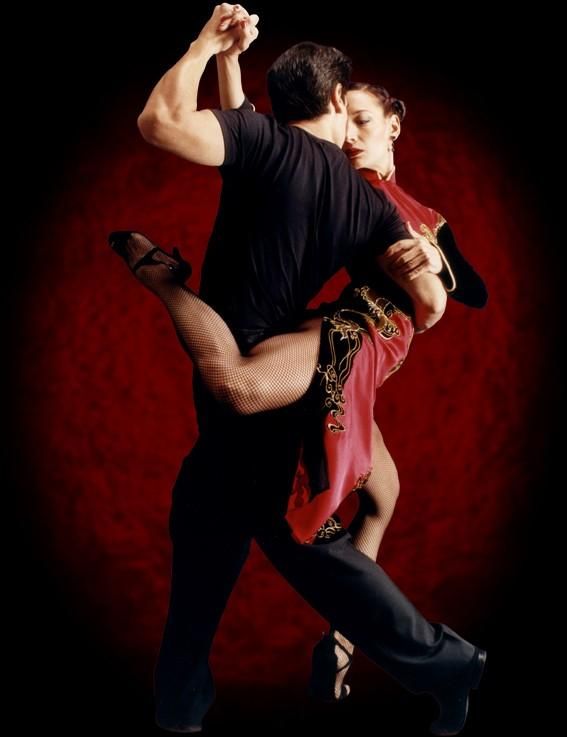
Since its availability in 2005, and particularly in the last few years, YouTube has become a popular source of visual information, including information about tango as a dance. Prior to taking tango lessons or observing tango danced live in a social setting, many people interested in learning about tango consult YouTube in an attempt to gain a visual gestalt of the characteristics of tango as a dance. The goal of this post is to examine the information available on YouTube as a representation of tango as a dance, and whether this is an unbiased portrayal of tango as it is danced in the social environment of the milongas of Buenos Aires, the gold standard of authenticity for tango social dancing. YouTube will also be examined as a potential source of accurate information about tango as a social dance.
The tango danced in the milongas of Buenos Aires will be referred to here as Tango de Salon, which includes Tango Milonguero and Tango Estilo del Barrio, and is not intended to designate specifically Tango Estilo del Barrio, often referred to as ‘Tango Estilo Villa Urquiza’ or ‘Salon (style) Tango’, particularly outside Argentina.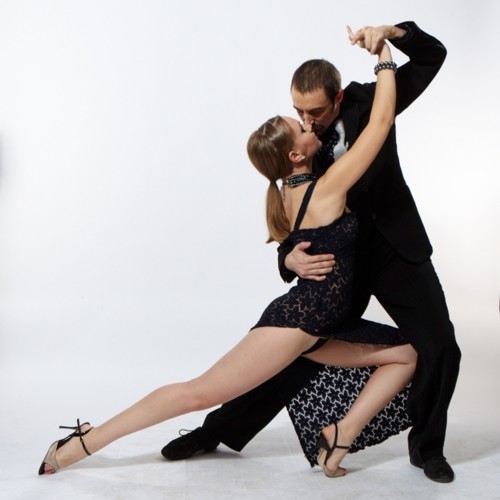 The milongas that serve as a point of reference are the Traditional Milongas, the predominant form of milonga in Buenos Aires, in contrast to the recent appearance of Informal Milongas and Social Practicas in Buenos Aires.
The milongas that serve as a point of reference are the Traditional Milongas, the predominant form of milonga in Buenos Aires, in contrast to the recent appearance of Informal Milongas and Social Practicas in Buenos Aires.
Strategy in Selecting YouTube Videos
Tango videos were selected from YouTube using the following strategy. Two key words were used as search criteria: (1) ‘Tango’, and (2) ‘Argentine Tango’. YouTube does not select videos in response to a search that are necessarily the most commonly viewed in the search category. However, the number of views is reported. The 5 most frequently viewed videos in each search category were noted. In the event that YouTube does not always include the 5 most frequently viewed videos in response to a search inquiry, each search was conducted 3 times. Only videos showing ‘dance’ (broadly defined as people moving across a floor as music is playing) were included. This search process identifies the information about tango as a dance that is most frequently viewed on YouTube.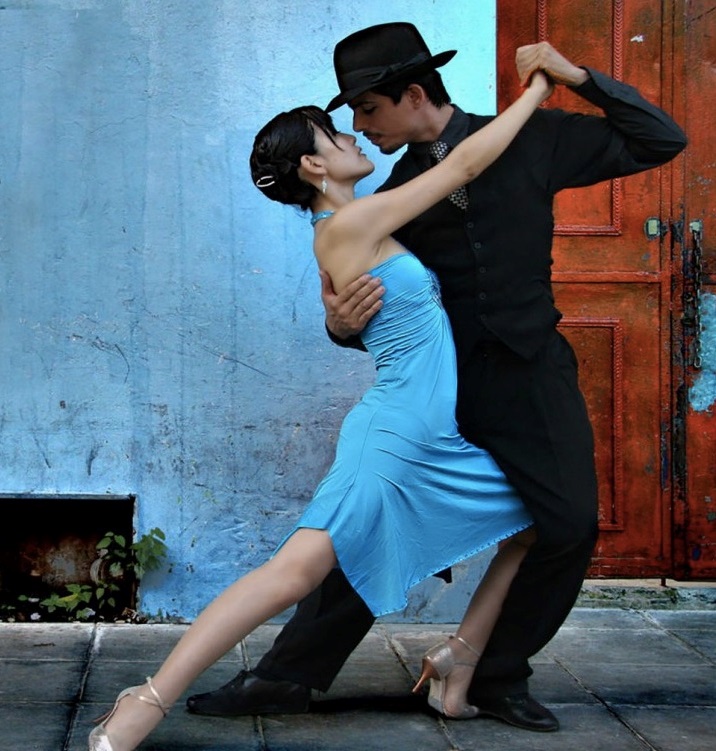 From this one can also infer that this is the information about tango as a dance that is most frequently viewed by people who are naïve about tango and who are consulting YouTube as a source of information about tango as a dance. It is known that YouTube video availability is not the same in different countries, so it is best to assume that the tango video visibility reported here is most accurate for the United States.
From this one can also infer that this is the information about tango as a dance that is most frequently viewed by people who are naïve about tango and who are consulting YouTube as a source of information about tango as a dance. It is known that YouTube video availability is not the same in different countries, so it is best to assume that the tango video visibility reported here is most accurate for the United States.
Video Category: ‘Tango’
(1) Tango Argentina: 15,228,956 views
This is a performance of Stage Tango by highly skilled tango stage performers. The music (Quejas de bandoneon) is consistent with music played in the milongas of Buenos Aires, although the Troilo orchestra version emulated is played infrequently there. As a performance, it is not a depiction of Tango de Salon. The rapid movements using a considerable amount of space and moving in unpredictable directions (i.e., not following a line of dance), as well as the attention attracting conspicuous movements, make this performance an unsuitable example of the type of dancing that is adapted for the milonga setting.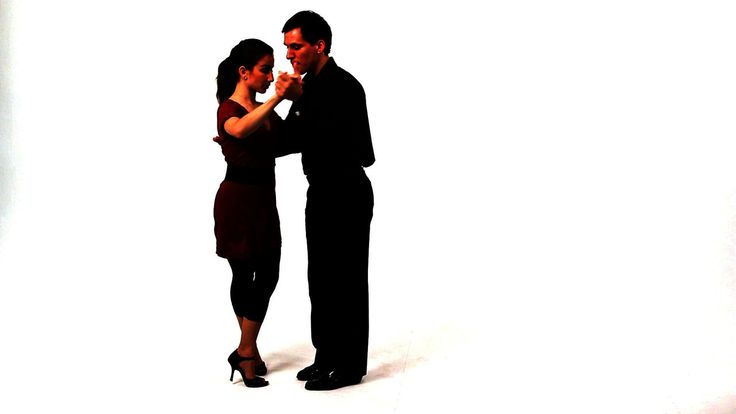 Undoubtedly the dancers are aware of this, but the naïve viewer is not and thus is kept in the dark regarding the appropriateness of this type of dancing in the milonga environment.
Undoubtedly the dancers are aware of this, but the naïve viewer is not and thus is kept in the dark regarding the appropriateness of this type of dancing in the milonga environment.
(2) Al Pacino – Scent of a Woman: 14,786,465 views
As is typically the case when motion picture actors portray dancing, the skill level leaves something to be desired. This dance is an awkward mix of some Ballroom Tango steps and attempts at Stage Tango poses. The music played is not authentic Argentine tango music, but rather a choppy rendition by the Tango Project of ‘Por una cabeza’. Despite the inauthenticity of the dance and the music, this scene is often used as a model for couples desiring to perform a ‘tango’ dance at their wedding, and dance instructors in North America (whether or not they are competent in dancing Tango Argentino) frequently receive requests to train prospective brides and grooms for a wedding performance to be billed as ‘tango’ using this music.
(3) Shakira – Objection (Tango) (first 1:00): 8,473,366 views
This is from a music video, i.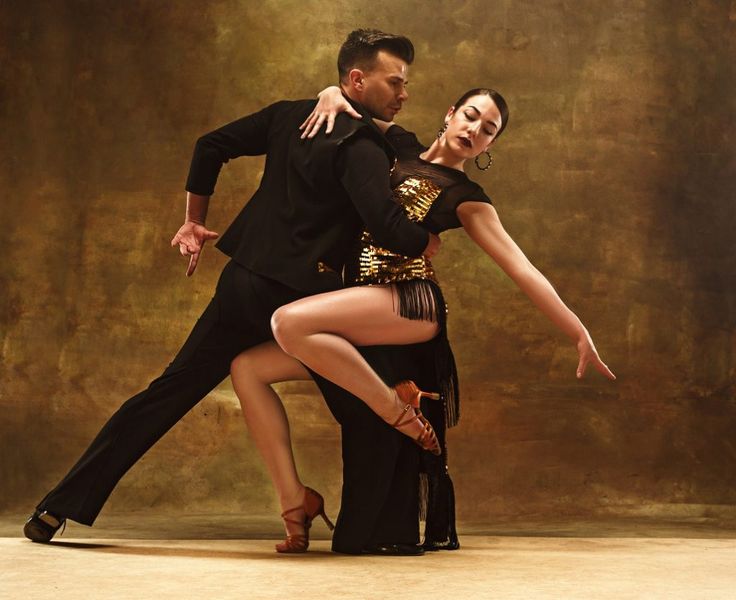 e., it serves as an advertisement for a recorded song. Only the first approximately 1:00 of this video attempts to portray tango. The music is ‘La cumparsita’ and although the tempo is not consistent throughout, making it inappropriate for the milonga, the quality of the music is on par with contemporary tango orchestras in Argentina. Presented in the video is a stereotype of a streetwise Latin male in macho mode engaging a reluctant woman in provocative clothing in a seductive scene. The man has good stage tango skills and Shakira does not look completely out of place in this limited exposure. However, once again, this is not Tango de Salon, i.e., dancing that is appropriate for the milonga.
e., it serves as an advertisement for a recorded song. Only the first approximately 1:00 of this video attempts to portray tango. The music is ‘La cumparsita’ and although the tempo is not consistent throughout, making it inappropriate for the milonga, the quality of the music is on par with contemporary tango orchestras in Argentina. Presented in the video is a stereotype of a streetwise Latin male in macho mode engaging a reluctant woman in provocative clothing in a seductive scene. The man has good stage tango skills and Shakira does not look completely out of place in this limited exposure. However, once again, this is not Tango de Salon, i.e., dancing that is appropriate for the milonga.
(4) Tango Fire – Verano Portenas: 7,990,113 views
This is an actual recording of a stage production. The music is Piazzolla’s ‘Verano porteño’, not intended for social dancing and not played at milongas in Buenos Aires. The performance is mostly modern dance with some added (and often crude) simulated sensuality.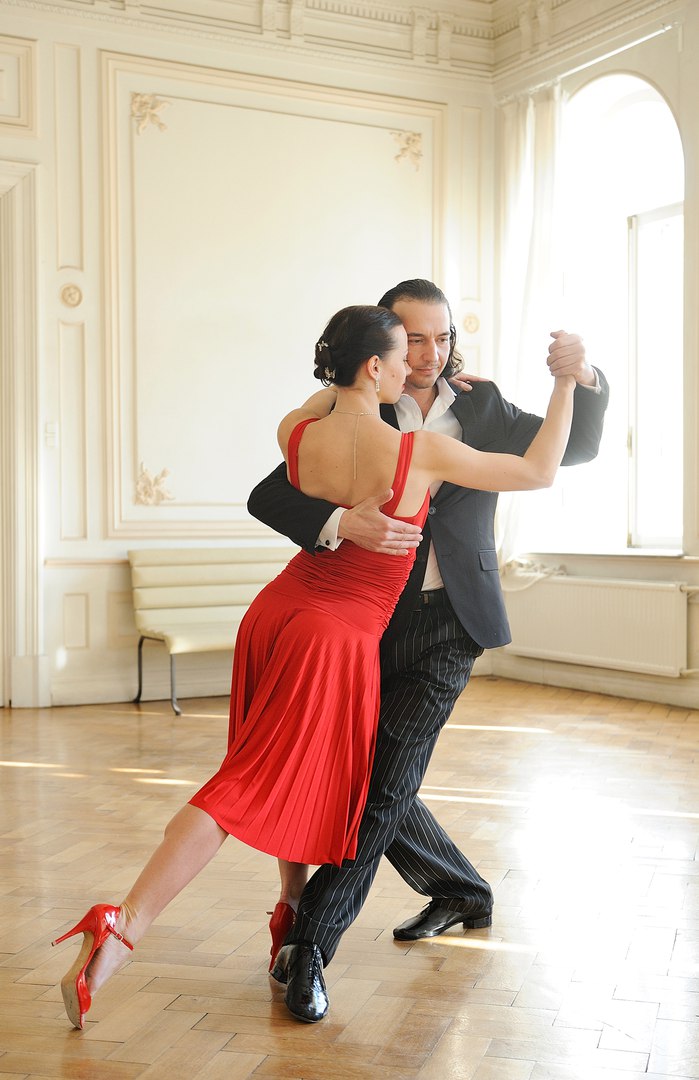 There is nothing resembling the intimate embrace characteristic of dancers in the milongas of Buenos Aires. There is almost nothing in terms of movement that is representative of Tango de Salon.
There is nothing resembling the intimate embrace characteristic of dancers in the milongas of Buenos Aires. There is almost nothing in terms of movement that is representative of Tango de Salon.
(5) Shall We Dance? Movie Clip: 5,583,471 views
Richard Gere and Jennifer Lopez (the latter in the role of a ballroom dance instructor) execute an awkward combination of Stage Tango poses and movements borrowed mostly from Ballroom Tango with popular electrotango band Gotan Project’s “Santa Maria (del Buen Ayre)” playing in the background. Included also are awkward attempts at expressing sensuality. This is neither tango dancing nor music that is suitable for the milonga.
Category ‘Argentine Tango’
Perhaps the category ‘tango’ is too broad, including some forms of tango (such as Ballroom Tango) that are not Argentine in character. Assume the viewer is interested specifically in the tango from Argentina. The top 5 most frequently viewed videos retrieved with the search terms ‘Argentine Tango’ are listed here.
(1) Tango Argentina (cited above)
(6) Tango Dance by Gustavo and Jesica from Buenos Aires, Argentina. Song: Claudinette, by Lidia Borda: 2,561,972 views
This is a fairly lifeless demonstration of Stage Tango danced with a tango cancion lacking in rhythm (i.e., not designed for dancing) playing in the background. The demonstration is rich in sacadas, arrastres, puentes, ganchos, boleos and numerous opportunities for the woman to lift her legs high off the floor. The dance does not move across the floor; there is little actual walking. It is not the Tango de Salon of the milongas of Buenos Aires, and despite the label advertising the dancers as USA Stage Tango Champions, it is far from the standard of stage dancing exhibited in tango stage productions from Argentina.
(7) Argentine Tango/Milonga–Amazing! 1,820,662 views
This is a demonstration of milonga con traspie given by El Flaco Dany Garcia and Luna Palacios at a milonga at the now closed Plaza Bohemia at 444 Maipu in downtown Buenos Aires.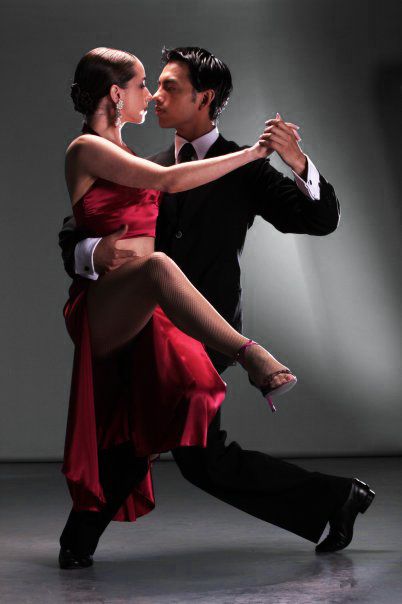 In contrast to all of the other videos reviewed in this post, it demonstrates, for the most part (e.g., excluding the underarm turn around 1:45) a type of dancing that could be done at a milonga in Buenos Aires, although very few dancers achieve the skill level demonstrated in this video. Dany Garcia is a milonguero who has participated in milongas in Buenos Aires for many years and thus his dancing is representative of the social environment in which tango is danced. However, as is the case with many demonstrations, the dancing does not follow the counterclockwise ronda characteristic of milongas in Buenos Aires. The music is ‘Tango negro’ by Juan Carlos Caceres, which is played occasionally for dancing in the milongas of Buenos Aires (Music Played at Milongas / Tango Social Dance Venues).
In contrast to all of the other videos reviewed in this post, it demonstrates, for the most part (e.g., excluding the underarm turn around 1:45) a type of dancing that could be done at a milonga in Buenos Aires, although very few dancers achieve the skill level demonstrated in this video. Dany Garcia is a milonguero who has participated in milongas in Buenos Aires for many years and thus his dancing is representative of the social environment in which tango is danced. However, as is the case with many demonstrations, the dancing does not follow the counterclockwise ronda characteristic of milongas in Buenos Aires. The music is ‘Tango negro’ by Juan Carlos Caceres, which is played occasionally for dancing in the milongas of Buenos Aires (Music Played at Milongas / Tango Social Dance Venues).
(8) Nicole Scherzinger & Derek Hough – Argentine Tango – Week 9: 1,358,796
This is a typical Dancing with the Stars performance in which a professional ballroom dancer leads a celebrity, an amateur at dancing, through a series of poses, in this case borrowed mostly from Stage Tango. Absent is the embrace and walking characteristic of Tango de Salon. The music used for dancing is an emulation of Gotan Project’s electrotango ‘Un musica brutal’, music that is not used for dancing in the milongas of Buenos Aires.
Absent is the embrace and walking characteristic of Tango de Salon. The music used for dancing is an emulation of Gotan Project’s electrotango ‘Un musica brutal’, music that is not used for dancing in the milongas of Buenos Aires.
(9) Argentine Tango Street Dancers: 918,966 views
This is a recording of street dancers on Avenida Florida, a pedestrian mall in downtown Buenos Aires, where many tourists wander and shop. The performance is Stage Tango, with standard Stage Tango movements and poses, although there is some walking. The music, Tanturi’s “Asi se baile el tango” is played regularly for dancing tango in the milongas of Buenos Aires.
One More Video: Argentine Tango without Music
This video did not meet the original criterion for inclusion as ‘tango dancing’, i.e., requiring music in conjunction with movement, but is included here because it was referenced in the search for ‘Argentine Tango’ and had over 1 million views, and completes a list of the Top 10 ‘tango’ videos on You Tube.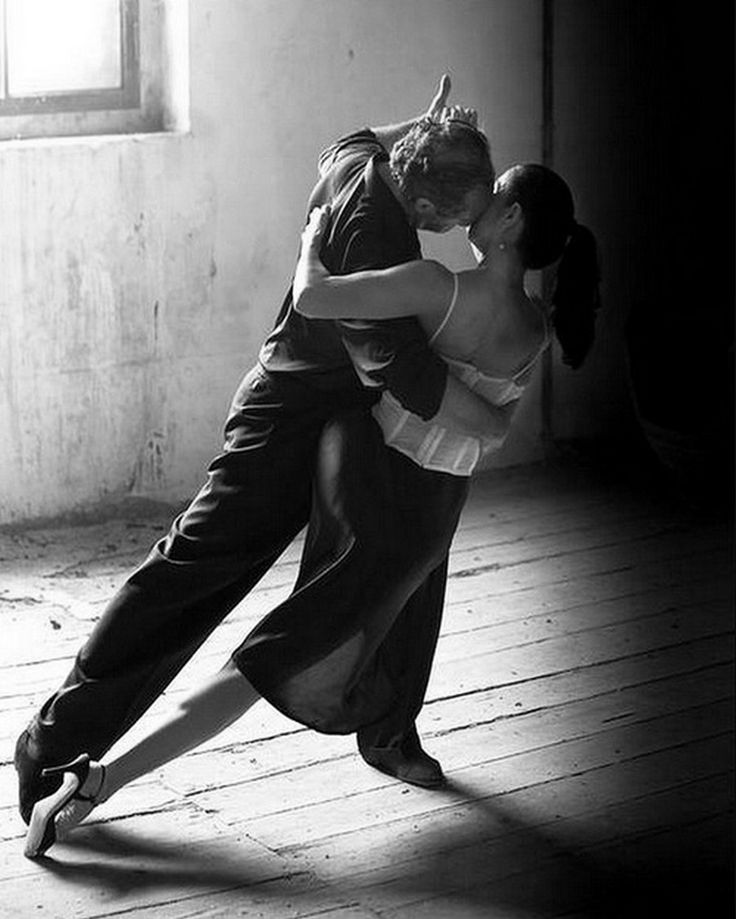
(10) Dancing the Argentine Tango: Modern Argentine Tango Steps: 1,644,041 views
In this video the instructors demonstrate movements that they correctly introduce as ‘show tango’, declaring it ‘modern’ (in contrast to the ‘older’ milonguero style), ignoring the fact that many thousands more people dance Tango Milonguero than Tango Escenario in Buenos Aires today. They show a series of movements such as drops, ganchos, boleos, sacadas and the sentada without music, describing these movements as ‘sensual’. This video presents movement without music that is inappropriate for the milonga, focusing the viewer on the wrong movements and ignoring the central role of music in the understanding of tango.
Consequences of Commonly Viewed YouTube Tango Video Content
In the United States (and probably in many other parts of the world outside of Argentina and Uruguay) for the prospective tango dancer wishing to learn about tango before embarking on a course of instruction, with the intent of acquiring skills for dancing tango in a milonga environment, consultation of YouTube for information about tango will provide an impression that Stage Tango, with its conspicuous movements and dramatic poses, characterizes the tango dance.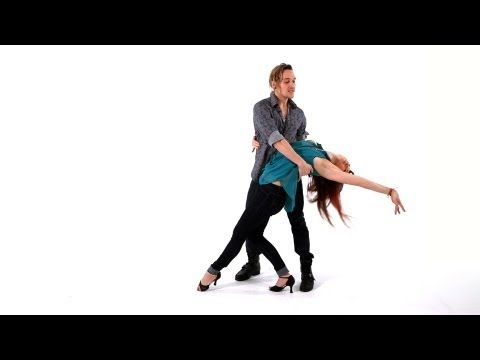 It is also noteworthy that much of the music used in demonstrations of tango dancing in popular YouTube tango videos is not the type of music that is played for dancing tango in the milongas of Buenos Aires. Of the 10 most viewed videos labeled as ‘tango’ on YouTube, in only two did the dancers use traditional tango music for dancing. The naïve prospective tango dancer does not know and the YouTube videos do not inform the prospective dancer that there is a difference between the tango designed for the stage and the tango defined for the milongas, and also that there may be a difference between the music used for performances and the music used for social dancing..
It is also noteworthy that much of the music used in demonstrations of tango dancing in popular YouTube tango videos is not the type of music that is played for dancing tango in the milongas of Buenos Aires. Of the 10 most viewed videos labeled as ‘tango’ on YouTube, in only two did the dancers use traditional tango music for dancing. The naïve prospective tango dancer does not know and the YouTube videos do not inform the prospective dancer that there is a difference between the tango designed for the stage and the tango defined for the milongas, and also that there may be a difference between the music used for performances and the music used for social dancing..
It is interesting to note that none of the Top 10 Tango Videos demonstrates Tango Nuevo, although this genre of tango appears to be the most popular in instruction at tango festivals in the United States and elsewhere throughout the world. It is unlikely that naïve dancers are capable of differentiating between Stage Tango and Tango Nuevo (Is Tango Nuevo a Form of Stage Tango?).
In any case, regarding opportunities for obtaining tango instruction, there is also an abundance of tango instructors, many who travel from Argentina specifically for the purpose of instructing foreigners in the execution of movements that are inappropriate for use in milongas, who will reinforce the misperception regarding tango dancing that may be derived from YouTube. The traveling instructors of Stage Tango and Tango Nuevo from Buenos Aires further feed the bank of misinformation by adding videos of their performances to YouTube as a means of advertisement, and recorders of additional performances given by these instructors at workshops and tango festivals provide further free advertisement and misinformation by uploading videos of these performances to YouTube. Except for the performance by Dany Garcia, notably absent from the most viewed tango videos is an accurate representation of tango as a social dance. Thus, it should come as no surprise that social tango dancing in the manner that is danced in the milongas of Buenos Aires is underrepresented, and elements of Stage Tango and Tango Nuevo are overrepresented at the tango social events advertised as milongas in the United States and, by extension of inference, in other parts of the world outside Argentina.
YouTube as a Source of Accurate Information about Tango de Salon
Despite the overrepresentation in YouTube of videos of tango dancing that portray Stage Tango (or even Ballroom Tango) dancing, YouTube can provide accurate information about Tango de Salon, if one knows how to use the resources available. Some sources of accurate information about tango social dancing in Buenos Aires milongas (i.e., videos of dancing in the milongas themselves, or demonstrations of Tango de Salon) available on YouTube are listed below:
(1) Milongas de Buenos Aires
This list contains over 175 videos of social dancing in the milongas and social practicas of Buenos Aires. It is done without commentary. There is a wide cross-section of milongas that have been selected for recording. If there is any bias, it is that this playlist gives an apparently equal representation (possibly even overrepresentation) of short lived sparsely populated milongas and practicas, as it does of the densely populated traditional milongas with considerable longevity.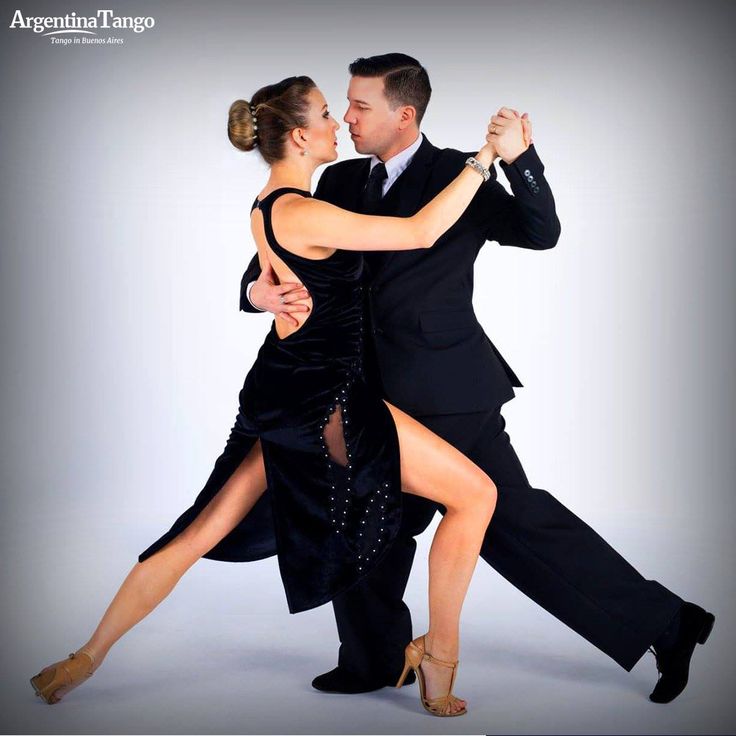
(2) Milongas and Milongueros of Buenos Aires
This playlist by Jantango contains 59 videos of tango dancing in Buenos Aires, mostly of social dancing in milongas, but also including some demonstrations of Tango de Salon given at milongas and at other locations. The focus is upon capturing the dancing of milongueros, men who have danced tango in the milongas of Buenos Aires for many years, and the milongas selected for recording are those in which these milongueros dance.
(3) Milongas in Buenos Aires
This is a playlist of 37 videos complied by Oleh Kovalchuke from Kansas City, Missouri. Most are recordings of tango social dancing at traditional milongas in Buenos Aires. Oleh also has complied a playlist of 116 videos under the heading ‘Los Milongueros’, many of which are demonstrations, by men recognized as milongueros, of tango dancing that would be considered appropriate for the milongas of Buenos Aires.
(4) 100% Tango Milonguero
This is a collection of 91 videos of demonstrations (mostly at milongas) of Tango Milonguero, the predominant stylistic variation of tango currently danced in the milongas of Buenos Aires.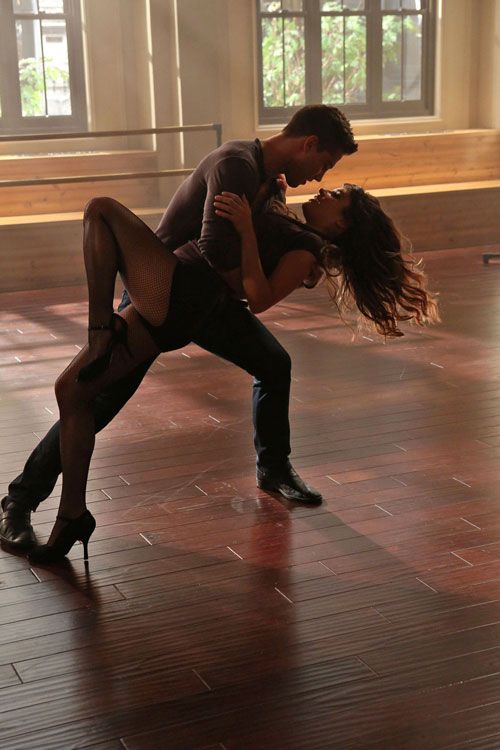
(5) Viejos Milongueros in Buenos Aires
Patricia Muller has created a YouTube playlist consisting of 18 recordings from the 1990s of Tango de Salon in such milongas as Sin Rumbo, Glorias Argentinas, and Confiteria Ideal, as well as practicas from Sunderland Club.
Value of YouTube as an Accurate Source of Tango Information
Prior to YouTube, they were few video recordings of tango social dancing in the milongas of Buenos Aires that were publicly available. Daniel Trenner had a video called ‘Salon Dancing in Buenos Aires’ that consisted of recordings made in 1992 and 1993 of milongas and practicas in Buenos Aires, including some that are still in existence today – the milongas at Salon Canning and Glorias Argentinas, and the practica at Cochabamba 444. It appears this video is no longer available for sale. There has also been a privately circulated and sold video by Barbara Durr and Michael Bronfenbrenner entitled ‘A Night in the Milongas of Buenos Aires’ that has recordings of predominantly Tango Milonguero in mostly Traditional Milongas from around 2000-2004, including some milongas still in existence such as El Beso, Centro Region Leonesa, Sunderland Club, Torquato Tasso, Club Gricel, La Viruta, Salon Canning, and La Nacional.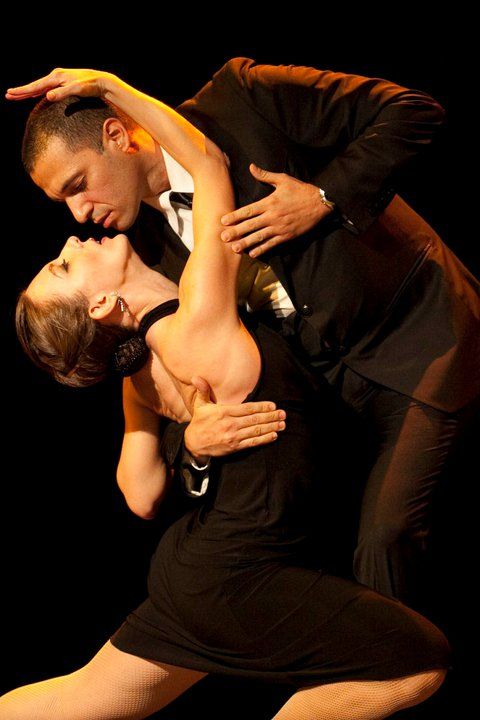 However, these videos generally were available only to people who already had some tango experience, probably a considerable amount of tango experience in most cases. The value of YouTube is that there has never been so much recording of authentic tango social dancing from the milongas of Buenos Aires made freely available to the inquiring public. The problem is that this information is hidden behind the overwhelming mass of tango recordings that, as a whole, provide a biased view of tango as a social dance.
However, these videos generally were available only to people who already had some tango experience, probably a considerable amount of tango experience in most cases. The value of YouTube is that there has never been so much recording of authentic tango social dancing from the milongas of Buenos Aires made freely available to the inquiring public. The problem is that this information is hidden behind the overwhelming mass of tango recordings that, as a whole, provide a biased view of tango as a social dance.
In order to counteract the flow of misinformation regarding Tango Argentino, it is the responsibility of those who have experienced Tango de Salon in Buenos Aires to provide prospective and current tango dancers access (as in internet links) to an accurate visual representation of the tango of the milongas of Buenos Aires, for example, on tango websites, as has been done in Tango Voice previously (Milongueros Dancing in the Milongas of Buenos Aires). It is the responsibility of instructors of Tango de Salon to provide visual documentation in support of the tango they teach, as a countermeasure to the inaccurate portrayal of tango as a performance art for a social setting that is commonly taught by visiting instructors from Argentina and their resident counterparts who in their home countries market tango for profit rather than for authenticity.
Summary
YouTube videos labeled as ‘tango’ are a common source of visual information for the naïve prospective tango dancer regarding the character of tango as a dance. A review of the most commonly viewed YouTube videos that are retrieved under the search terms ‘tango’ and ‘Argentine tango’ reveal that, in almost all cases, the dancing presented is either Stage Tango or a mix of Stage Tango and Ballroom Tango, the latter being more common in recordings derived from commercial media such as motion pictures and television programs. From this it is apparent that most of the information viewed on YouTube regarding tango as a dance does not provide a sufficient opportunity for the naïve prospective tango dancer to view the Tango de Salon danced in the milongas of Buenos Aires. The most commonly viewed videos also provide a biased perspective of the music to which tango is danced in the milongas of Buenos Aires, in that only two videos out of the ten most popular referenced used Traditional Tango music for dancing.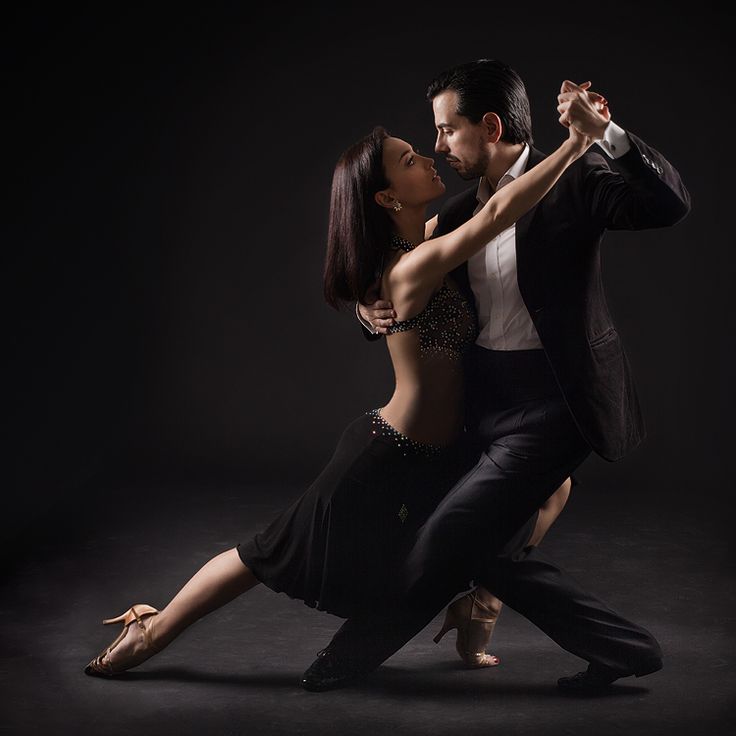 Nevertheless, despite this initial biased portrayal of tango dancing and music, YouTube can be a valuable resource in that there exist several playlists that contain numerous recordings of Tango de Salon danced in the social setting of the milongas in Buenos Aires. In order to counteract the biased flow of information emanating from marketers of tango outside Argentina (i.e., tango instructors promoting a version of tango that is unsuitable for the milonga environment), organizers and instructors who wish to create a Buenos Aires tango atmosphere in their own community should promote awareness of the rich library of accurate visual information regarding Tango de Salon that is available on YouTube.
Nevertheless, despite this initial biased portrayal of tango dancing and music, YouTube can be a valuable resource in that there exist several playlists that contain numerous recordings of Tango de Salon danced in the social setting of the milongas in Buenos Aires. In order to counteract the biased flow of information emanating from marketers of tango outside Argentina (i.e., tango instructors promoting a version of tango that is unsuitable for the milonga environment), organizers and instructors who wish to create a Buenos Aires tango atmosphere in their own community should promote awareness of the rich library of accurate visual information regarding Tango de Salon that is available on YouTube.
Like this:
Like Loading...
This entry was posted on Tuesday, March 6th, 2012 at 5:08 AM and is filed under ballroom tango, Milonga, milonga codigos, milongueros, Tango, tango culture, tango de salon, tango economics, tango escenario, tango estilo del barrio, tango music, tango nuevo. You can follow any responses to this entry through the RSS 2.0 feed. You can leave a response, or trackback from your own site.
You can follow any responses to this entry through the RSS 2.0 feed. You can leave a response, or trackback from your own site.
Tango 8-count Basic to the Cross — Ultimate Tango School of Dance
The Basic 8 Count, also referred to as the 8 Count Basic, is one of the most fundamental steps taught in Argentine tango.
If one is studying tango as a beginner, it is more than likely that one will encounter the Basic 8 Count to the Cross. While there are no predefined steps in tango since it emphasizes the importance of improvisation, this sequence of the Basic 8 Count to the Cross will still come up as one of the first lessons.
This must-see video for beginners by Anita and Hernan demonstrates the fundamental steps and torsions, including the 8-basic count to the cross at 1:23.
A post from Endre Tango gives a summary of the steps of the Basic 8 Count to the Cross:
● Step 1: The leader takes a step back.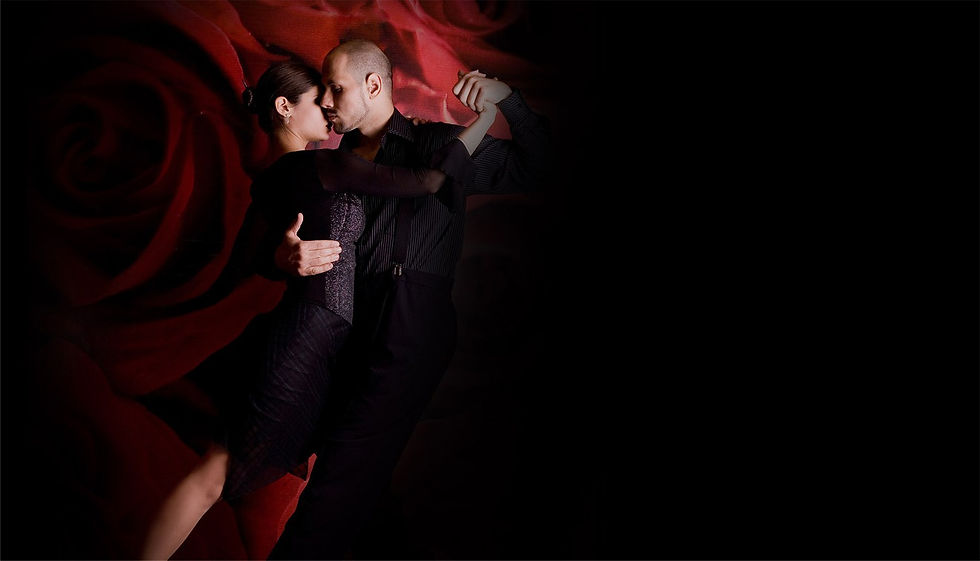 However, it is recommended to ignore this step as the leader is at risk of colliding with others since they cannot see behind them. You can also take the step towards the center of the dance floor avoiding the direct movement backwards and executing it at 45 degrees.
However, it is recommended to ignore this step as the leader is at risk of colliding with others since they cannot see behind them. You can also take the step towards the center of the dance floor avoiding the direct movement backwards and executing it at 45 degrees.
● Step 2: The side step or “salida” is usually done towards the center of the dance floor.
● Step 3: The leader steps on the outside of the follower.
● Step 4: Forward step in preparation for the cross.
● Step 5: The follower completes the cross step as the leader closes his feet.
● Steps 6, 7, and 8: These steps terminate the sequence.
Step 5, also typically called Position 5, is perhaps the most iconic step in this sequence and arguably the most complicated to do for a beginner.
After all, for a follower to execute a successful cross, one must be aware of timing, the subtle cue from the leader, the proper adjustment of torsion, where and when to shift one’s weight, and the track wherein the foot must be placed after completing the cross.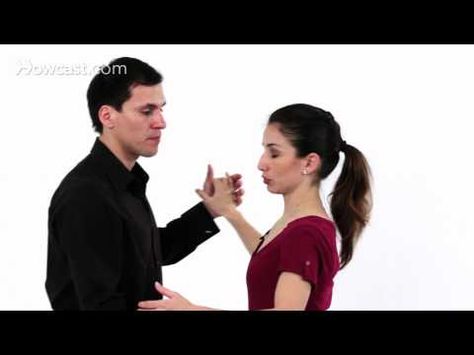 All of these must be considered simultaneously lest the dancer’s movement ends up being stilted or they end up twisting in the wrong direction.
All of these must be considered simultaneously lest the dancer’s movement ends up being stilted or they end up twisting in the wrong direction.
But as much as the cross has been part of the Basic 8 Count, many are unaware that before the beginning of the Second World War, the cross did not exist in this sequence. A story from The Art History of Love by Robert Farris Thompson recounts an anecdote from Mingo Pugliese in which the latter saw the cross position sometime in 1938. This suggests that until then, there had been no record of the cross being done in the Basic 8 Count sequence.
Was there a cross or wasn’t?
In Tango Secrets, the conference about METHODOLOGY & PHILOSOPHY OF ARGENTINE TANGO, we asked the question about the basic to the cross and also about cross-system to many professionals. There was not really a unified answer.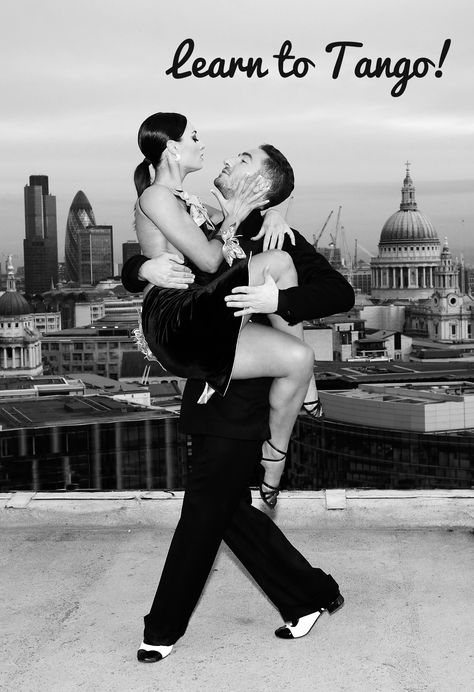 however - a few interesting thongs came out.
however - a few interesting thongs came out.
One of them is that the traditional Tango was mostly danced with the cross feet. that’s right! Cross-system came BEFORE the parallel. And that kind of confirms that the basic 8 count to the cross is a later invention. Why? - Because it is totally on a parallel system!
The Story Behind the Cross Step
Interestingly, this story is tackled by Gustavo Benzecry Sabá in the YouTube channel Tangomilonga. In this video, Gustavo tells of an accident that led to the development of the cross step in the Basic 8 Count thanks to dancers José "El Vasquito" Orradre and his practice partner Recalde. With the discovery of the cross step, pre-existing forms were consequently revolutionized from then on.
There is a considerable back story that Gustavo mentions in the video, which offers a richer and more nuanced description of the time the cross step was discovered by accident.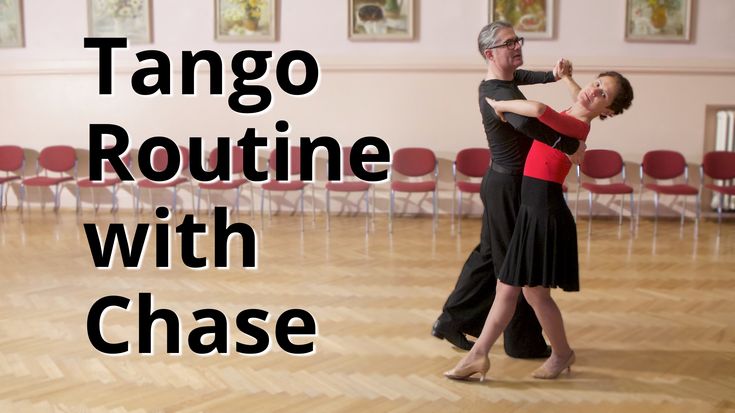 What is important to remember, though, is that this occurred around the 1930s and, back then, thousands of young people were attending practicas with the objective of discovering movements and developing steps and tango figures. They would do it either alone or with their companions.
What is important to remember, though, is that this occurred around the 1930s and, back then, thousands of young people were attending practicas with the objective of discovering movements and developing steps and tango figures. They would do it either alone or with their companions.
In those days, Buenos Aires was so rife with social and sports clubs that there were at least four or five present in every neighborhood. Gustavo describes these clubs as “factories of talents waiting to develop.”
Enter José "El Vasquito" Orradre and his dance partner, a certain Recalde, who like many young people back then, dedicated themselves to dancing tango by entering practices. Gustavo explains how the cross step was discovered:
“So, according to some testimonies, one of those days in 1938, during practice at one of those clubs, Vasquito forced his partner Recalde to go backwards and, since he saw that there was no place, he chose to cross the road left leg on the right, inventing this position that today seems typical of the female role — a movement that was called ‘Sobrepaso’ for some and ‘Contrapaso’ for others.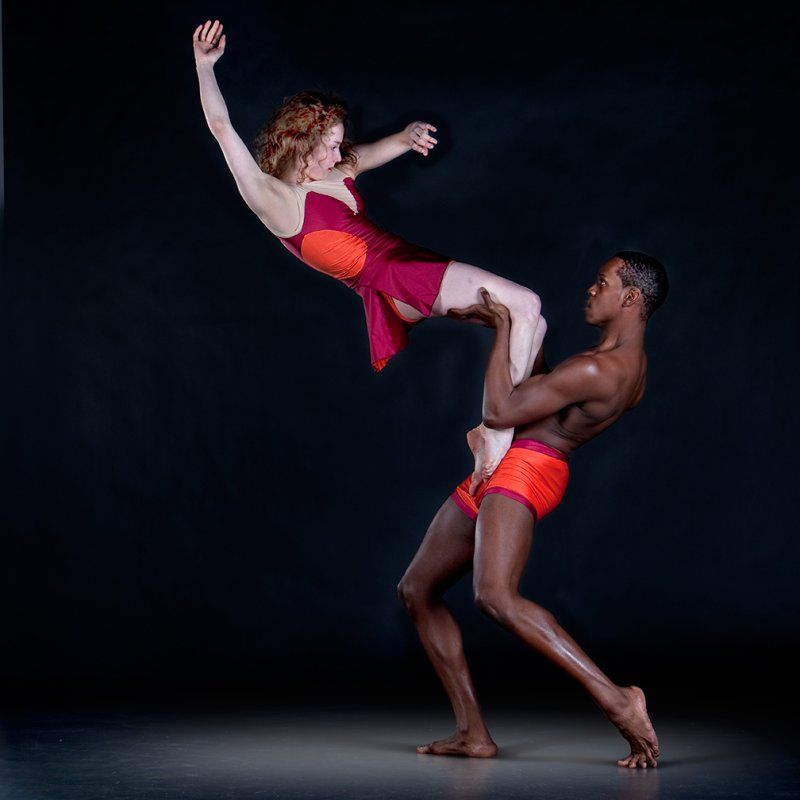 A rarity, because the steps had no names in those years. That would appear some time later. But the point is that at that precise moment, this couple found a unique position — a revolutionary crossover. And since there wasn't much more room, they ended up with what we now know as steps 6, 7, and 8 of the basic step. The last three steps are known today as rotated resolution or closing steps.”
A rarity, because the steps had no names in those years. That would appear some time later. But the point is that at that precise moment, this couple found a unique position — a revolutionary crossover. And since there wasn't much more room, they ended up with what we now know as steps 6, 7, and 8 of the basic step. The last three steps are known today as rotated resolution or closing steps.”
Carlos Estévez, also known as Petróleo, was said to be the one who saw the possibilities of the crossing around this time. His account is supported by some documentation, such as the book Tango y Rumba published in 1938.
In this book (1938), there is a figure of a woman who puts her feet together and leaves the weight on her left foot. This suggests that until that year, the cross step had not yet been discovered or considered as a possibility.
Over time, the cross step, as Gustavo concludes in this video, would “determine the creation of some ornaments, favoring balance and understanding the location of the bodies in a different way.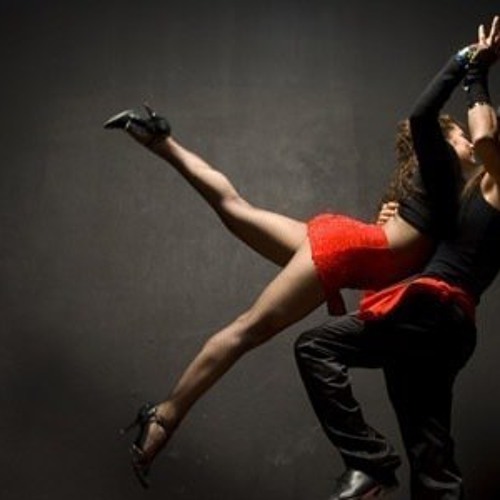 Without going any further, he would make the woman face the leader perfectly. Over time, that crossing was perfected until the woman made that movement an expression of sensuality and beauty. [...] So today we can well thank Vasquito Orradre and Recalde, two anonymous faces, for completely changing the way of dancing and for making us see that sometimes a small accident can produce a revolutionary advance.”
Without going any further, he would make the woman face the leader perfectly. Over time, that crossing was perfected until the woman made that movement an expression of sensuality and beauty. [...] So today we can well thank Vasquito Orradre and Recalde, two anonymous faces, for completely changing the way of dancing and for making us see that sometimes a small accident can produce a revolutionary advance.”
Gabriel Folques, author of Las Tablas del Tango, explains the cross during Tango Secrets Summit.
A Happy Accident or an Established Presence?
Interestingly enough, Gloria y Eduardo Arquimbau had an interesting take on Tangomilonga’s YouTube video recounting the anecdote about Vasquito Orradre and Recalde.
For those who may be unaware, Gloria and Eduardo Arquimbau are considered well-known and well-respected tango dancers and pioneers who, according to their website The Tangueria,
They “
were also instrumental in regenerating tango in Argentina and bringing it into the homes of everyday Argentineans through Buenos Aires television stations from 1962 onwards.
Their enormous talent carried them throughout the world. not only as exceptional performers but also as choreographers, in the tango shows Tango Argentino and Forever Tango during the 1980s and 1990s. They performed with many of the famous and respected tango orchestras such as Canaro, Pulgliese, DiSarli, Troilo, and Piazzola. For more than 60 years, Gloria and Eduardo taught the world how to dance and love tango, and it was through tango that they ascended the world.”
In Eduardo Arquimbao’s comment, he notes that Gustavo’s story is interesting but mentions that…
[tango] is only one and it has always been the same since its birth.
He further states that the cross position first appeared sometime in the 1940s with the change of the position of the bodies. He notes that,
“
Previously it [the cross position] was danced with the bodies more open and the woman stepped forward.Both danced sideways. When the woman began to walk backwards, it’s at that moment that the crossing appeared, which was the leg that normally passed in front. This was not invented by anyone — customs change and bodies adapt. That's how tango is.”
Whether it was discovered by chance or has always been present in this sequence, the Basic 8 Count remains a fundamental step in teaching tango to beginners.
Some Ongoing Debates Regarding the Basic 8 Count
There has been some ongoing debate about how this particular sequence should be taught. While this varies from one teacher to another, there are those who question whether the back step should be included in lessons. Similarly, there are those who argue that
the Basic 8 Count to the Cross is not an appropriate sequence to be taught to beginners for a number of reasons.
For instance, a post from the Max Planck Institute for the Physics of Complex Systems notes that while teachers consider this eight-step sequence basic, it, unfortunately, “leads beginning tango dancers to mechanically do this sequence over and over, without any regard for the music or the obstacles on the dance floor.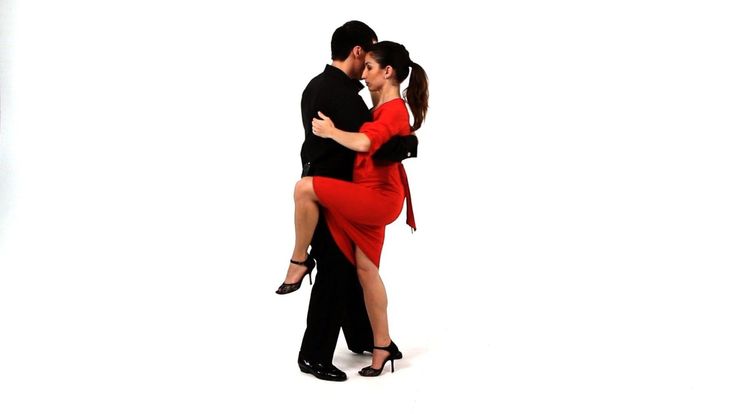 ” It suggests varying the sequence by adding one or more two-step walks to keep dancers from developing this bad habit.
” It suggests varying the sequence by adding one or more two-step walks to keep dancers from developing this bad habit.
A post from TangoClay also sites eight reasons that explain why the Basic 8 Count might not be appropriate for beginners:
● It is difficult to execute
● Misleads couples into thinking they know how to dance tango
● Doesn’t encourage good lead and follow
● Stifles improvisation
● Causes beginners to drift to the center of the dance floor
● Cannot be used in a crowded milonga
● Stifles musicality
● Rarely used by good social dancers in milongas (As a full sequence that is. The cross itself is used all the time)
On the other hand, a post from Black Alert offers a variation of the Basic 8 Count that may be more suitable for use in milongas. The post explains what it calls the Useful 8 Count Basic:
“Put simply, it is a modification and goes further by actually adding variations on a theme.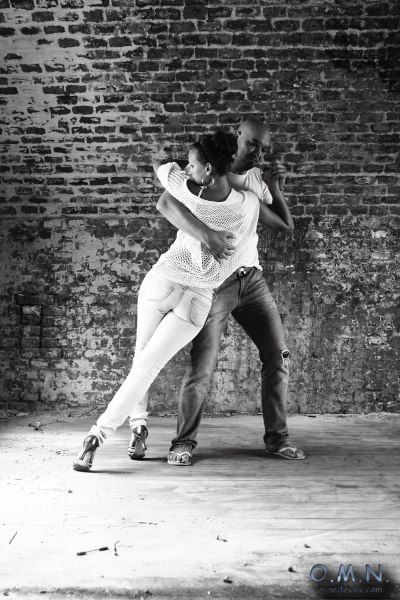 The modification has to do with orientation and then actual rotation; that
The modification has to do with orientation and then actual rotation; that
if you modify the orientation of certain steps and you rotate the resulting steps in certain ways, then the 8 Count Basic becomes more than useful.
It’s actually a lot of fun in nearly any embrace that you can come up with (including the Berlin Embrace)! Not only that, there’s a possible surprise at the end that you weren’t expecting that’s sitting there!”
The Basic 8 Count’s first step, which is a backward step, is the one often being criticized as unsuitable for crowded milongas.
This is because taking a step backward on a packed dance floor may lead to accidents since the leader might not be able to appropriately gauge their distance between the other dancers close by. However, an easy solution for the back step is to either completely disregard it, do only a small one. or redirect it towards the center of the dance floor! A one example of this is a video by Howcast, where the leader’s sequence for the Basic 8 Count begins with only a small back step.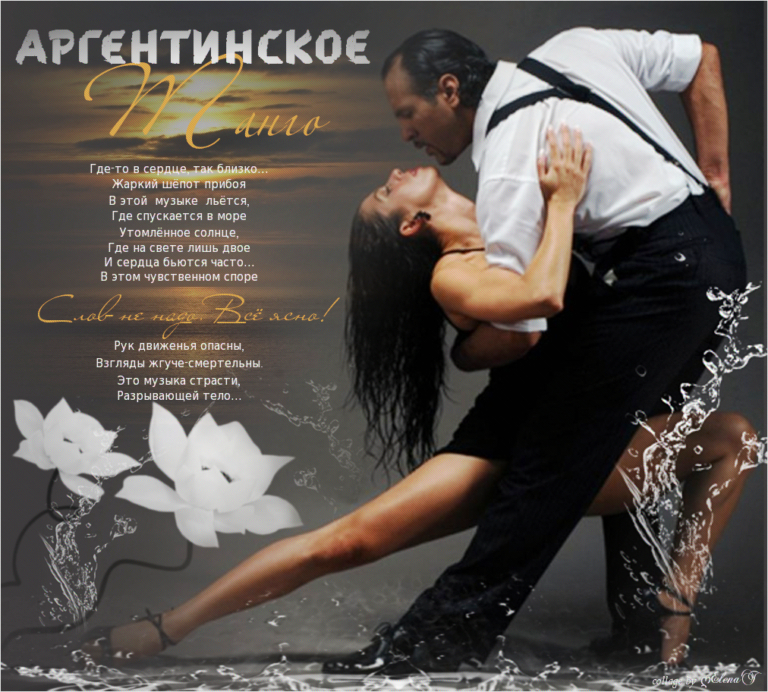
Is the Basic 8 Count to the Cross Necessary?
Despite the ongoing debates, the Basic 8 Count is still largely considered a fundamental step in Argentine tango. In fact, many of those who helped explain the structure of tango, such as Gustavo Naveira and Los Dinzel among others, were able to discover new techniques and methodologies using the Basic 8 Count sequence.
Similar to other art forms, one cannot truly appreciate Argentine tango without a deep understanding of the fundamental steps that make up its figures.
While the dance itself often highlights improvisation, precision is still necessary to achieve elegant movements and beautiful embellishments.
In fact, knowledge of the fundamental steps is what makes revolutionary discoveries possible, as evidenced by the story of Vasquito Orradre and Recalde.
Without their constant practice, they might not have chanced upon the cross step, which has made a mark on how tango is danced today.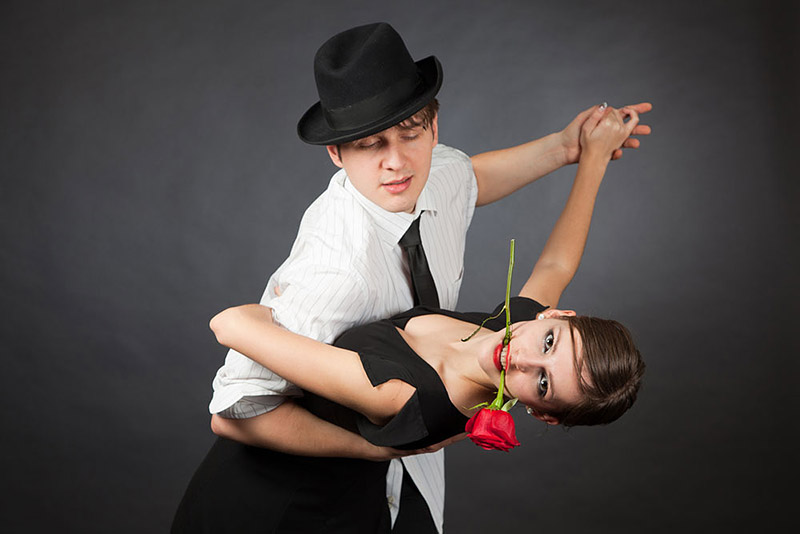
Learn about Argentine Tango
Signup to get our most current articles, info about classes and events, and special deals!
Argentine Tango, Beginner Tango, Tango Knowledge, Tango performance, Tips for dancingAnita Flejtertango music, tango musicality, la cumparsita
0 Likes 90,000 12 life hacks, to quickly learn how to dance from Mamita DanceDances
Author: Pavel Gather
Psychologist, Lecturer Salsa and Tango
Dances
Author: Pavel Pavel
Psychologist, Lecturer Salsa
on At the start, you always want to get a quick result. When it doesn't happen, the hypothesis arises that everything takes time. After a conditionally acceptable time, humility comes to mastering pair dances, which, perhaps, is not given, and I will just do what I learned somehow. nine0003
nine0003
This is the most common story of those who believe that the mere act of attending a pair dance class is enough to learn how to dance.
Absolutely not. If you want to really dance well, you have to make an effort outside of the dance class. A good teacher will definitely be needed, but the initiative should be on your side.
1. Listen to music
The most common and accessible advice that is given already in the first lessons. And it definitely works. Music creates a certain atmosphere of the dance and intuitively you want to move to it. It doesn't matter where you listen to music - in the car, on headphones while walking or doing household chores. nine0003
An addition that will help you dance better is your active participation in the music. Sing along, dance or simply beat musical accents with any free parts of the body. In the subway, for example, it is enough to tap out bright moments with your fingers, in the car to sing along with sounds, and at home you can jump for pleasure.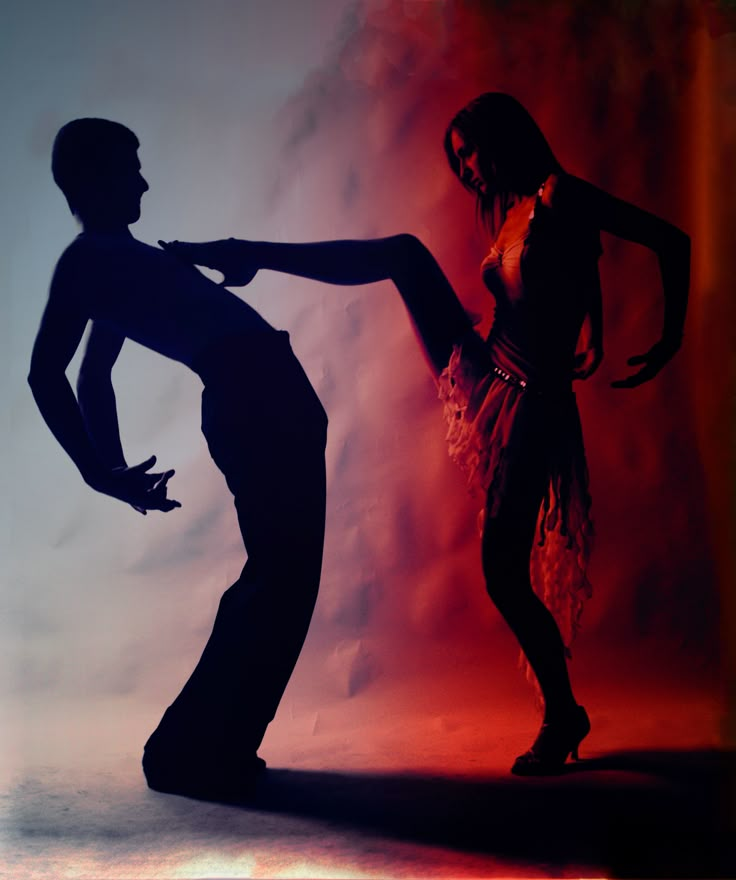
2. Watch videos of good dancers
It's complicated, but also obvious. It’s more difficult, because without recommendations from more experienced dancers, unfortunately, it’s not so easy to find a good quality video on the net (I mean not the resolution quality, but the content itself). nine0003
Meaningful video viewing is about building an understanding of HOW dancers make a particular impression on a partner or viewer. Technology is at the heart of everything. Understanding how the pros do it is a big step forward.
It is important to distinguish a show from a disco dance, a staged performance from an improvisation, a stylized dance from an authentic one, etc. Ask for recommendations and dance teachers will always throw off a couple of videos of worthy landmarks. nine0007
Tango Z. Showreel.
Online modern tango courses
Tango nuevo is the most advanced version of tango. We can quickly learn to dance from zero to a steep level.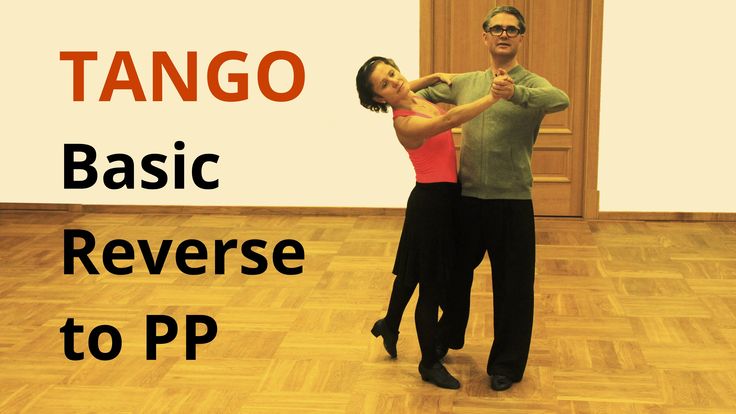
| View details |
3. Dance in salsatecas/milongas/discotheques
A very delicate moment when it is worth coming to the first party. From a technical point of view, most students in 1-3 months have a sufficient set of figures and techniques to come and dance calmly. Psychologically, the same moment can be stretched out for an indefinite time. After all, it is imperative to “not lose face”, “learn more figures” and be sure what to do in case “there is an unfamiliar movement”. nine0003
In fact, the partygoers don't really care (except for a small layer of non-professional teachers who want to help inexperienced dancers by treating them as customers in the future). It is important to come and try dancing after a month of classes. You can only with friends or guys from your group. This will be enough to feel the adrenaline and inspiration from the dance.
4. Dance with partners or partners not of your level
The conventional wisdom that you need to practice in groups of your level does not withstand the test of experience.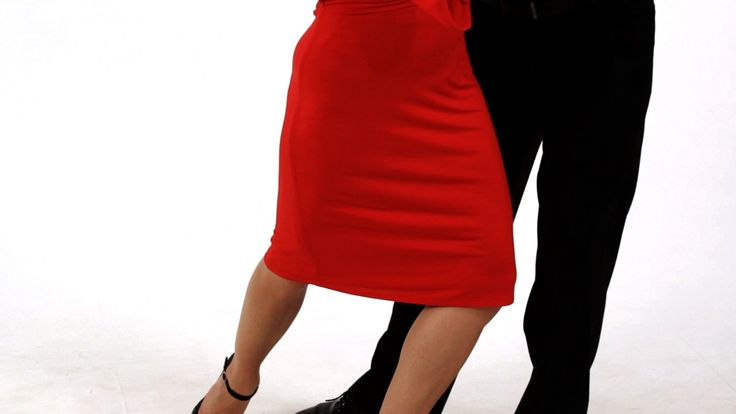 Perhaps now your eyes widened in surprise, and you want to meaningfully read the phrase again. Yes, you saw everything correctly: when you dance with a partner of your level, you don’t grow anywhere. nine0003
Perhaps now your eyes widened in surprise, and you want to meaningfully read the phrase again. Yes, you saw everything correctly: when you dance with a partner of your level, you don’t grow anywhere. nine0003
It's important to understand that not only does it work one way and you have to dance with cooler dancers, but it works even more effectively the other way. It is no coincidence that teaching pair dances dramatically raises the level of the teacher himself. You have an endless stream of very beginner dancers.
How it works. A more experienced partner needs to be "stretched". It's easy and obvious. With beginners, you need to take more initiative on yourself, see the general pattern of the dance more widely, turn on and insure more, try to be an example and be more careful. The quality of interaction begins to grow significantly. And wonderful partners too. nine0003
Dancing with partners of your level doesn't make you grow. Dance with both beginners and more advanced dancers
Dominican Bachata Women's Style Online Course
Want to learn how to hypnotize those around you with the most appetizing part of your body? On the course we will tell you all the secrets.
| Interesting |
5. Learn to dance for a partner and for a partner
Turks and Argentines are one of the best partners in the world. In Russia, partners are highly valued. Why? The answer is simple. In Argentina and Turkey, it is not questionable for men to ask another man to lead in one piece or another and give feedback on the quality of the lead. For them, it will be a great shame to hear moralizing from a partner, or even more so to be known in the community as an insecure partner. nine0003
In Russia, due to the constant, often far-fetched, opinion that there are more women in pair dances, partners calmly get up and study their partner's part. Such partners then grow into very cool dancers and teachers. In no case do this at parties, only in class. Here we are talking only about the learning strategy. At parties, be yourself.
6. Do not memorize the links
Always try to look deeper and understand the through principle and idea of movement.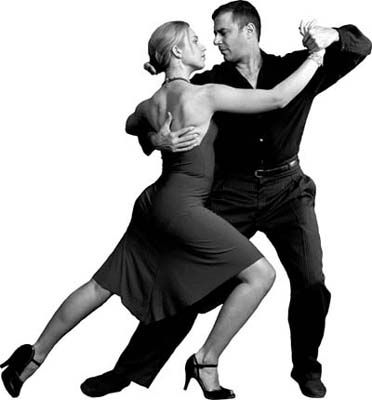 Understanding what and how is done will make it possible to independently generate any sequences and chips. nine0003
Understanding what and how is done will make it possible to independently generate any sequences and chips. nine0003
Human memory is limited and there will always be a moment when something will escape and your repertoire will be limited by the size of RAM.
In Argentine tango, for example, there are seven levels of movement construction that, when mastered, will allow you to make millions of combinations. And how many dance sequences can you really remember? In rueda, more than 150 figures dance in a rare circle. It's hard to keep more in mind.
7. Develop your body
Many years of experience in teaching couple dance shows that as soon as everyone pairs up in a class, any progress in individual style ends. But it is the individual style that distinguishes everyone at the disco: partners change, and style is always with you. nine0003
The body as the main instrument of dance must be very plastic, responsive and emotional. Surprisingly, not all pair dance schools have a general physical warm-up.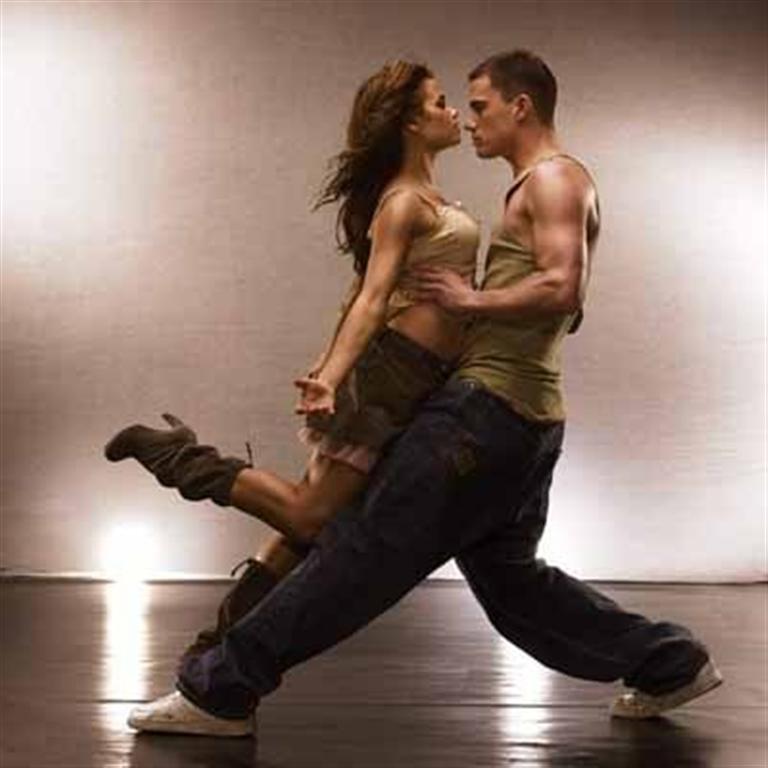 It is vital to tune the body and understand how it works.
It is vital to tune the body and understand how it works.
You can always train extra and concentrate more on the basic steps, as their true value is as body work. The sequence of steps is, in fact, the simplest thing that can be in pair dancing. The quality of individual performance determines the craftsmanship. nine0003
8. Try on the images of inspiring dancers
A psychological life hack for those who have already mastered the steps, but still feel that there is not enough brightness and drive. Most are terribly afraid of being someone else's "clone". Here the action is the same as under the influence of hypnosis - the more you resist, the more you plunge into an altered state of consciousness.
With a high degree of probability, you are already dancing like someone else's "clone". A meaningful fitting of someone else's image is that you mentally take the image of the one who inspires you (inspiration is critical in this case) and "put on" yourself. Then you start dancing and trying to feel in general how it is to be able, for example, to be the best partner or the sexiest partner in a disco. This is much more difficult than it seems. But it works extremely efficiently. nine0003
Then you start dancing and trying to feel in general how it is to be able, for example, to be the best partner or the sexiest partner in a disco. This is much more difficult than it seems. But it works extremely efficiently. nine0003
9. Dance to offbeat music
Habitual rhythms keep you tight. Tango salon or speedy timba leave little room for experimentation and fantasy. Pattern dancing is always noticeable and is reserved for beginners.
The truly new is born outside of the usual. Look for places to experiment. If there is no place, organize self-training. The main thing is not to get carried away, because music determines the style. We bring something new to pair dances, rather than trying to change them. nine0007
Search, improvise, don’t be afraid to go beyond, develop in different directions, be inspired by music atypical for the style
10. Try your hand at basic dance directions
dances exist according to their own non-choreographic laws.
This is the deepest delusion, which has turned into a ceiling for the qualitative development of partner dances. After all, all professional dancers, for example, in salsa or bachata, build their ideas on the basic choreographic principles. nine0003
Do not think that choreography is only applicable on stage. Any meaningful movement of the body can be choreographic. In general, try classical or modern choreography. Basically, hip-hop can work too.
11. Look for battle sensations
Pair dances return us to an active position of manifestation of our body. As in the days of our ancient ancestors, we impress the members of the opposite sex by how dexterous, hardy, sexy, etc. we are. Modern laws of the jungle in the entourage of big cities. nine0003
If you look around the dance floor, it becomes clear that the majority are clearly herbivores (not in the sense of vegetarians, but in relation to those around them).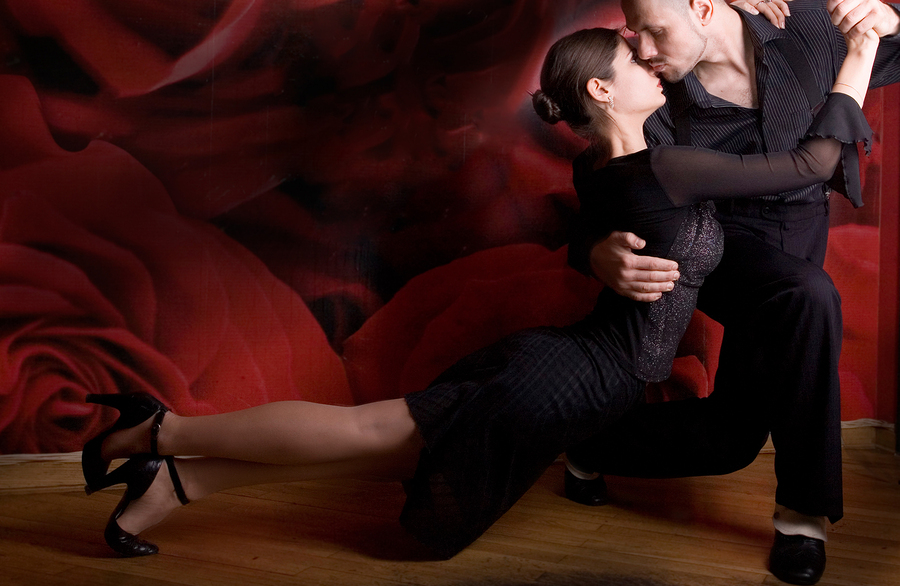 I am sure that predators are always more interesting in terms of the attractiveness of the image - try to find a counterbalance among herbivores, for example, a cat woman or a lion man.
I am sure that predators are always more interesting in terms of the attractiveness of the image - try to find a counterbalance among herbivores, for example, a cat woman or a lion man.
The conversation is about an internal position, not about aggressiveness. Lability and lack of control are inherent in adolescents, and not in adult self-sufficient people.
Accordingly, even a training or friendly battle gives, on the one hand, practical skills - to make a bright sequence of movements, bring an idea to a climax, show a spectacular feature, on the other hand, develops the psychological basis of the dance - self-confidence, resistance to extraneous attention, self-control and self-control in complex elements. nine0007
12. Communicate with professionals
The environment shapes the internal position. Basically, real passionaries of the dance community are ready to openly talk, discuss and support the development of dance in every possible way. Universal principles and the ideas they articulate have a much longer and more practical perspective than meets the eye.
Universal principles and the ideas they articulate have a much longer and more practical perspective than meets the eye.
Accept that, for example, behind the words "listen to your partner" is not only a beautiful metaphor, but also a practical skill to literally listen to your partner. At the same time, always treat every thought, even the most respected teacher, as a private opinion. nine0003
Your skill will lie in finding the scope of the idea even in conflicting opinions. Most often, the contradiction is speculative and the truth lies in the angle of perception or situationality.
Your dancing growth will stop sooner or later. This can happen at the level of three basic steps or years of experience in teaching and show performances. Regardless of your level, the suggested 12 life hacks can get you off the ground and greatly accelerate your dance growth. There is no way here without your motivation and activity. Take your dance development into your own hands. nineOl000 Dangerous sexuality
Salsa: destroyers of stereotypes
Couple dancing as a source of strength.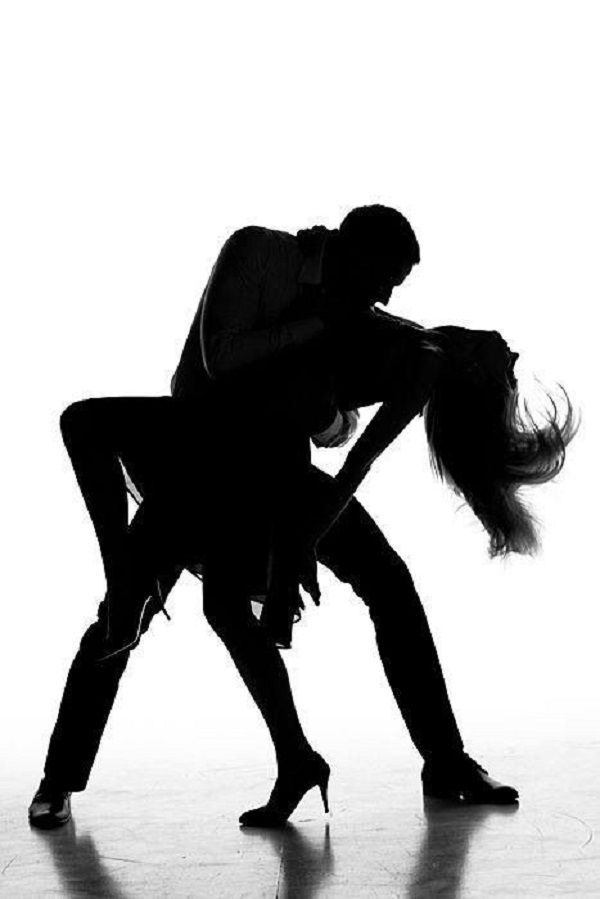
Self-destruction of the couple dance community
The Salsa series as a mirror of the community
Mamita Fridays: salsa, bachata
Destroying the myths about leading pair dances
Does dancing make us better?
The seven deadly sins of teachers
Why we will never dance bachata like the Dominicans
Why tango?
Dispute over musicality
Selection of dances according to alcohol preferences
Where to find inspiration for dancing? nine0003
Terrible tango nuevo
Distribution of roles in a salsa party
Argentinean tango through the eyes of a salsa dancer
Is there a predisposition to dancing?
Which is more effective: individual or group lessons?
Sexual overtones in pair dances
Learning to dance tango at home lessons. Taking the first steps in tango (photo, video lessons)
The history of tango began in Argentina. At first, the passionate dance was performed only by black men in bars, taverns, and various places of entertainment. It was a real duel for the heart of a beautiful lady. It was she who had to choose the most interesting, dexterous dancer. But by the end of 19century, its popularity is growing. In Buenos Aires, he was very fond of emigrants, and then the whole world. In our time, this is already a pair dance, where the partner leads, and the partner, barely holding back her passion, follows him.
It was a real duel for the heart of a beautiful lady. It was she who had to choose the most interesting, dexterous dancer. But by the end of 19century, its popularity is growing. In Buenos Aires, he was very fond of emigrants, and then the whole world. In our time, this is already a pair dance, where the partner leads, and the partner, barely holding back her passion, follows him.
First steps in tango
Now anyone can learn Argentine tango. Argentine tango video lessons for beginners will help you take the first steps in mastering a beautiful, fresh, expressive dance. This is undoubtedly a dance of the heart, love and death. They even invite him only with a glance, and if the lady averted her eyes from the gentleman, then this is already regarded as a refusal. nine0003
Argentine tango lessons for beginners - a detailed and wonderful video where experienced choreographers, professionals will show you all the basic steps and combinations that will help you portray any mood and feeling through dance. They will help you learn how to listen to music correctly, follow it, correctly maintain the style, and tell you about all the features of the performance.
They will help you learn how to listen to music correctly, follow it, correctly maintain the style, and tell you about all the features of the performance.
Expression and passion
The most important part of the Argentine embodiment of love - emotions, feelings, passion, which does not come out, but rages somewhere inside. Such hidden expression forces the performer to be at the very edge of the sensual. nine0003
Argentine tango dance video will tell you how to correctly express your attitude, learn how to improvise. After all, these are not exact steps, verified schemes, but a real performance. This is not just a dance, but a whole little life lived in a few minutes.
Undoubtedly, Argentine tango for beginners is not particularly difficult. Absolutely anyone can learn, the main thing is to listen to yourself, your feelings, feelings, harmoniously contact with a partner, understand each other. nine0003
Invariable attributes of dance
There is a certain invariable style that is ideal for temperamental performance. To start dancing the dance of passion, you need to pay attention to the following aspects:
To start dancing the dance of passion, you need to pay attention to the following aspects:
- Shoes;
- Clothing;
- Music.
Shoes for Argentine tango should be comfortable and convenient, but at the same time be elegant and beautiful. For women, these are sophisticated sandals with thin heels. The color can be any, preferably bright. And for men, elegant lacquered boots are suitable. nine0003
Clothes for Argentine tango - a beautiful tight dress, often with an open back, obligatory slit on the side. It should not hinder your movements and you will look stunning in it. They also love bright colors, especially red. The partner must have a permanent felt hat. You can complement the image with suspenders.
And, of course, the choice of music plays a big role. People often ask what is the name of the Argentine tango harmonica? This is originally a bandoneon, which can be accompanied by a whole orchestra, where various instruments are present:
- Guitar;
- Piano;
- Double bass;
- Flute;
- Violin.

This music is very popular in our time, it can often be heard in figure skating, synchronized swimming, gymnastics.
A beautiful dance is performed everywhere: on special venues, stages, festivals, competitions, clubs. It has many variations. To learn how to dance it, it is not necessary to know a large number of figures, the main thing is that the style and technique are impeccable, and the movements are musical. Exercises for Argentine tango can be viewed and started dancing right now. nine0003
Jul 17 2015
Tango is a sensual, dynamic ballroom dance that originated in Argentina. However, tango has been danced in ballrooms all over the world and is a completely different dance from the Argentinean tango! This is due to the fact that Arthur Murray wanted to change the dance, made it easier and taught this variation in his ballroom dance studio.
The American style of tango features movements that are performed in an open as well as a closed position.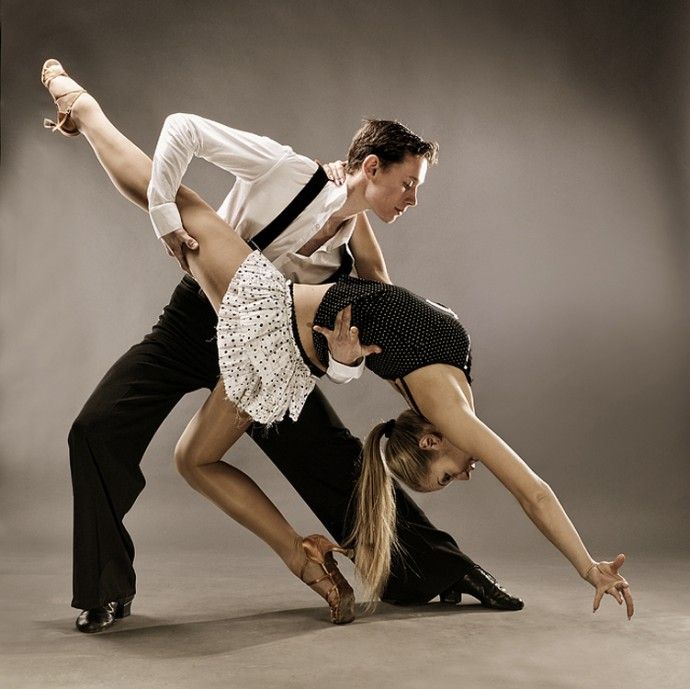 There are many twists and turns and jerky movements and poses, along with slow, sensual movements that create a contrasting effect. Although some people prefer to dance the tango in one place, most dancers move around as they dance. Change-of-position dances, such as the tango, must always be danced in an anti-clockwise direction, the so-called "line of dance", to avoid collision between the dancing couples. nine0003
There are many twists and turns and jerky movements and poses, along with slow, sensual movements that create a contrasting effect. Although some people prefer to dance the tango in one place, most dancers move around as they dance. Change-of-position dances, such as the tango, must always be danced in an anti-clockwise direction, the so-called "line of dance", to avoid collision between the dancing couples. nine0003
The initial dance steps in tango alternate in this way: slow, slow, fast, fast, slow. For a slow step there are two beats of the musical rhythm, for a fast step - one. The steps should be performed in a staccato technique, that is, they should be quick hits of the foot on the floor, as opposed to smooth rearranged ones. The only exception is the final dance step, during which you should slowly move the active leg. The knees should remain bent for most of the dance, with a few exceptions. nine0003
The couple usually starts the tango from a position where the bodies are close to each other.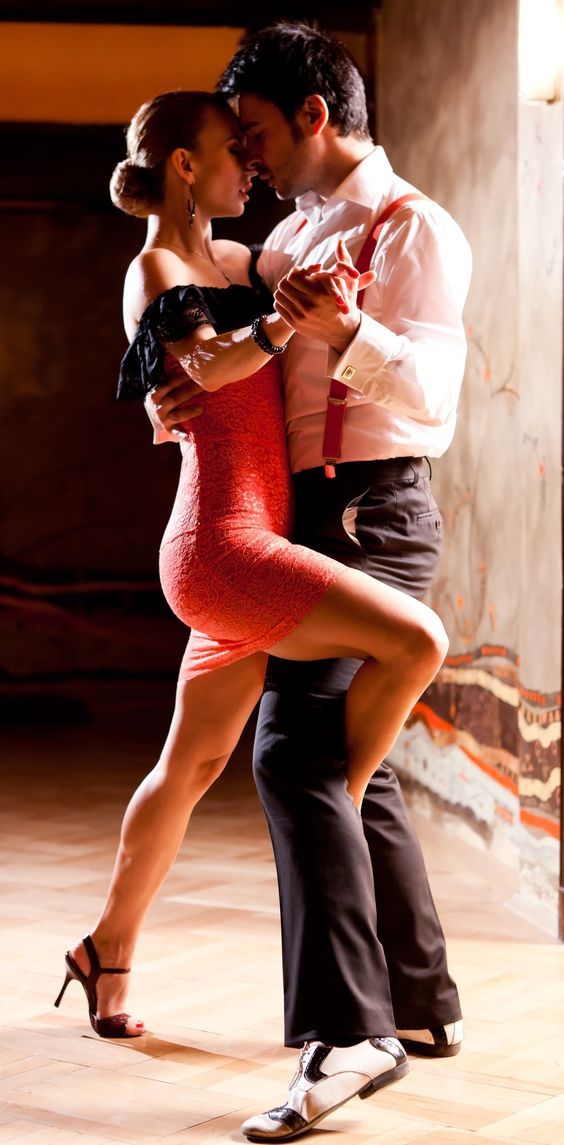 The right hand of the lady lies on the left hand of the man, they should be approximately at eye level, the arms should be slightly bent at the elbows. The man's right hand should be placed on the middle part of the partner's back. The lady encloses her left elbow on the man's right elbow, her left thumb should lie under the partner's right triceps. The lady during the dance should deviate slightly to the right, while taking a position as she looks at her left wrist. Tango is usually danced in close contact, in which chests and hips collide, but beginners can keep their distance until they gain enough experience. You can learn how to dance tango and other styles of dancing at the D-FUSION dance studio. Where professional choreographers will make you a real dancer. nine0003
The right hand of the lady lies on the left hand of the man, they should be approximately at eye level, the arms should be slightly bent at the elbows. The man's right hand should be placed on the middle part of the partner's back. The lady encloses her left elbow on the man's right elbow, her left thumb should lie under the partner's right triceps. The lady during the dance should deviate slightly to the right, while taking a position as she looks at her left wrist. Tango is usually danced in close contact, in which chests and hips collide, but beginners can keep their distance until they gain enough experience. You can learn how to dance tango and other styles of dancing at the D-FUSION dance studio. Where professional choreographers will make you a real dancer. nine0003
Numerous dance steps can be used in tango, from very simple and unpretentious to very difficult and difficult to perform. The more musical steps you learn, the better you can combine them to make your dance even more interesting. Over time, with practice, you will be able to dance as if you had set the dance to a certain music. There are a lot of dance steps, it is impossible to list them here, so let's focus on the main ones.
Over time, with practice, you will be able to dance as if you had set the dance to a certain music. There are a lot of dance steps, it is impossible to list them here, so let's focus on the main ones.
Man's basic musical steps in tango
On the count of “one-two”, bring the straight left leg forward.
On the count of three-four, take the right foot forward.
On the count of five, step forward with your left foot.
On the count of six, take a step to the right with the right foot.
On the count of "seven-eight", slowly bring the left foot to the right, not transferring weight to it.
Basic dance steps of a woman in tango
On the count of "one-two" take a step back from the right foot.
On the count of three-four, slowly bring the left leg back. nine0003
On the count of five, take a step back with your right foot.
On the count of six, take a step to the left with your left foot.
On the count of "seven-eight", slowly bring the right foot to the left, not transferring weight to it.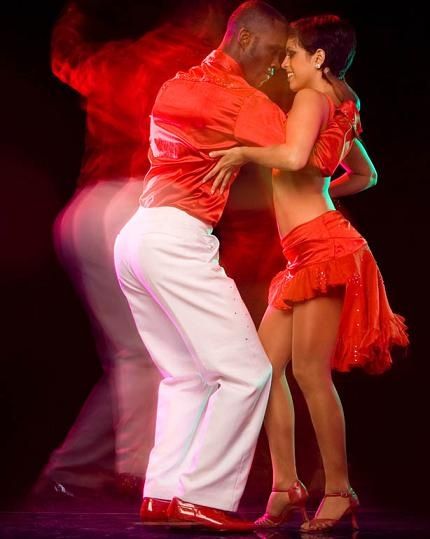
Learning to dance the tango is not easy, and you need a good teacher to do it. However, you can learn the basics on your own. If you are ready, then soon you will be dancing this sensual, romantic, elegant dance.
Steps
Basics
Listen to music. The essence of tango is feelings, not actions. Any master of this art form will tell you that to really learn how to dance the tango, the music has to flow through you. So start listening! Listen in the car while washing dishes; learn to feel how the music "flows" through the body. And as you dance, you will discover something unexpected!
- Which musicians should you listen to? Di Sarli, Canaro, Pugliese, D'Arienzo and Laurenz are five artists that are really worth listening to. Drive them into YouTube - you have everything at your fingertips! nine0246
Start with hugs. In tango, hugs are numero uno. Yes, hugging is easy, but hugging should be sensual, light, and strong at the same time.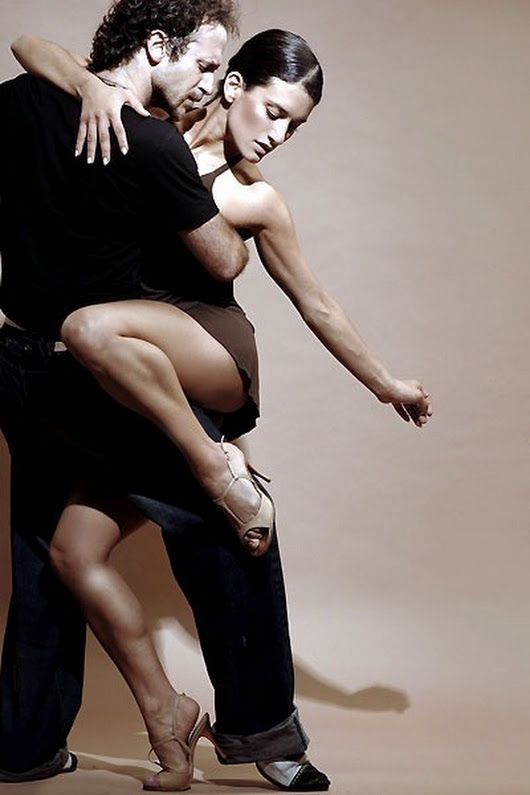 Simply put, both partners should be mirror images of each other.
Simply put, both partners should be mirror images of each other.
- The partner raises his left hand and clasps his partner with his right hand, placing his hand on her back slightly below her shoulder blades. The partner puts her right hand on the partner's left hand, and wraps her left hand around him, placing it also in the middle of his back. nine0246
Maintain perfect posture. Tango originated in the poorest areas of Argentina, but this does not mean that it has not developed since then. To dance the tango correctly, you must maintain perfect posture. That is, the head should be up, the back is straight, the lower back and stomach are extended, the chest is raised - your whole body exudes confidence.
- If you don't keep the correct posture, you will not only look a little ridiculous, but also risk hitting or injuring your partner. Imagine a hunched partner who leans on his partner, forcing her to arch her back and mince around his clumsy steps, trying not to touch his legs.
 So you can generally be left without partners! nine0246
So you can generally be left without partners! nine0246
Practice alone first. Before dancing with a couple, especially if you are leading, it is important to learn the basic steps. Imagine going to the gym in a miniskirt and high heels! Well, I do not. First you need to prepare.
- Both partners must remember this rhythm: slow, slow, fast, fast, slow. Leader steps:
- Left foot forward
- Right foot forward
- Forward left
- Right foot right
- Connect the legs by moving the left to the right. Like this! Again!
- For the slave (reflection of the actions of the master):
- Back with right foot
- Left foot back
- Back with right foot
- Left foot left
- Put the right foot to the left. That's all! Now again!
When you're ready, dance with a partner. Of course, tango is not only slow-slow-fast-fast-slow, and that's the beauty of it.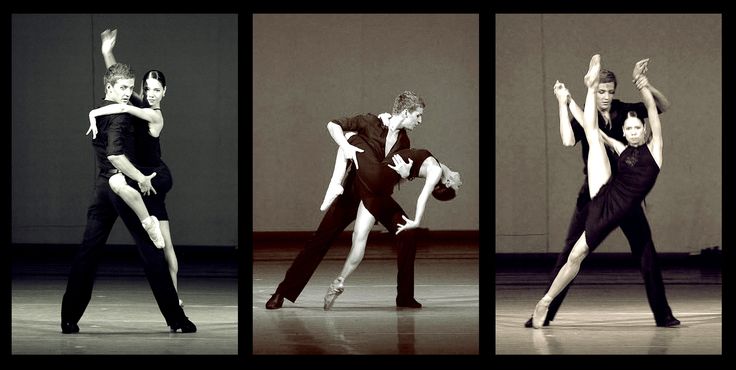 Once you learn this rhythm and can dance it counterclockwise in a circle, find yourself a partner. Whether you are leading or being led, feel your partner's presence and spin with him. Otherwise, you will be dancing next to each other, and not with each other. nine0003
Once you learn this rhythm and can dance it counterclockwise in a circle, find yourself a partner. Whether you are leading or being led, feel your partner's presence and spin with him. Otherwise, you will be dancing next to each other, and not with each other. nine0003
- Dance with different partners. Some will be easier than others. Same styles work better than different styles. And of course, if you find someone who dances better than you, don't miss this chance and learn from them!
Add fire moves
-
Add jiggles. This is an American tango style move where you don't step, but sway back and forth, transferring your body weight from one foot to the other. That is, if you take the step that we talked about earlier, then instead of two steps in quick-quick, you take one step and sway with the transfer of body weight. It is clear that nothing is clear, right? nine0003
- With a normal step, when you lead, you take two steps forward on the count of fast-fast.
 Now, instead, take one step and shift your body weight onto your back foot (without moving it). If you are a follower, then you move in a mirror way: a step back quickly, and instead of a second step, you move your body forward.
Now, instead, take one step and shift your body weight onto your back foot (without moving it). If you are a follower, then you move in a mirror way: a step back quickly, and instead of a second step, you move your body forward.
- With a normal step, when you lead, you take two steps forward on the count of fast-fast.
-
Korte. Korte and rocking can be combined into one movement. Corte is the same as rocking, only it is done in the first two steps (slowly slowly). To make the court look more spectacular, the steps should be long and smooth. nine0003
Add twists and turns. Stand with a partner in the promenade - a position where your bodies are facing each other and your heads are turned to the side. Now instead of moving forward and backward, you can move left or right. And now you can perform twists and turns. In most tango figures, the partner does most of the hard work, but the men can get it too!
- Let's imagine that you are a follower in a pair and take two steps to the right (slow-slow). Immediately after the second step (before the third), turn the body to the left.
 And keep moving back in relation to the original direction. It was a swivel. nine0246
And keep moving back in relation to the original direction. It was a swivel. nine0246 - To make a turn, the leader must turn around the partner 180 degrees on the first quick step and beyond. Let's rock!
- Let's imagine that you are a follower in a pair and take two steps to the right (slow-slow). Immediately after the second step (before the third), turn the body to the left.
-
As a leader, plan ahead. It may seem that being the leader is easier, because he does not have to try to guess the partner's movements. But the leader has his own difficulties. The leader always needs to plan ahead and understand how the dance should develop. Therefore, in order not to stomp in a circle, think over the dance a few steps ahead. nine0003
If you are a follower, you should feel the weight of your partner. The follower has less worries: he just needs to follow the flow. But it's not easy and can sometimes be confusing if you don't trust your partner. The easiest way to know what to expect is to feel your partner's weight. Feel where it's going. Feel where it shifts between figures. Balance with it. He will take you with him.

-
Everything ingenious is simple. nine0319 You can make very complex movements, but if you and your partner don't have that synchronicity, that smooth flow that tango really is, then it doesn't matter. Don't chase after the outside, but follow your feelings. Keep things simple, master that simplicity, and the rest will come by itself.
- Have you ever seen an old couple moving in a simple dance? It's so touching because they are just are dancing. It is this, this very simplicity that should be your goal. nine0246
Dance school lessons
-
Find a teacher who cares about technique rather than cramming steps and figures. The teacher must be able to dance both as a leader and as a follower in order to teach you how to dance in both roles and feel the partner. Try to find a small group of about 10 people so that you have a choice of partners and the teacher can work with each one individually.

- There are three types of tango: Argentine tango, ballroom tango and American tango. Argentine tango has become very popular due to its varied figures, impromptu movements, and greater emphasis on the woman. There are many schools for beginners teaching this type of tango. nine0246
-
Movement in a circle. Whether you're dancing at school or at a party, tango usually moves in circles. So there are a couple of important things to keep in mind:
- Anti-clockwise movement. This does not apply to turns, swivels and other movements. Make sure that the general direction of the dance goes counterclockwise.
- More experienced tango dancers take longer steps and take up more space. Less confident dancers, pushed aside by more daring couples, close in the center of the circle. Don't repeat their mistakes! nine0246
-
Go to milonga and tango nights and show off. If you are walking alone, then find a partner with the help of cabeceo (Spanish for "nod" - a signal of invitation or consent to dance).
 No need to ask, agree with your eyes. Make eye contact - smile or nod. If the person does not answer you, look for another. This method is not so intrusive and does not put pressure on a person.
No need to ask, agree with your eyes. Make eye contact - smile or nod. If the person does not answer you, look for another. This method is not so intrusive and does not put pressure on a person. - One dance set, or tanda, includes 4 dances. Therefore, if you are not sure that you want to dance all 4 dances with this person, then invite him during the 2nd or 3rd set. nine0246
-
Be patient. Tango requires balance and a willingness to learn. It will be extremely difficult at first, but trust that it will pass. You will master the steps. But first, crush someone's toes. It's okay - they will heal. If you practice, you will get better and better.
- Tango is not a dance that can be mastered in an evening or in one lesson. This is what makes it so mesmerizing! There is much to be learned; it can take a lifetime to learn how to dance and understand tango. But don't let this fact put you off, let it inspire you. By learning to dance the tango, you will master the art.
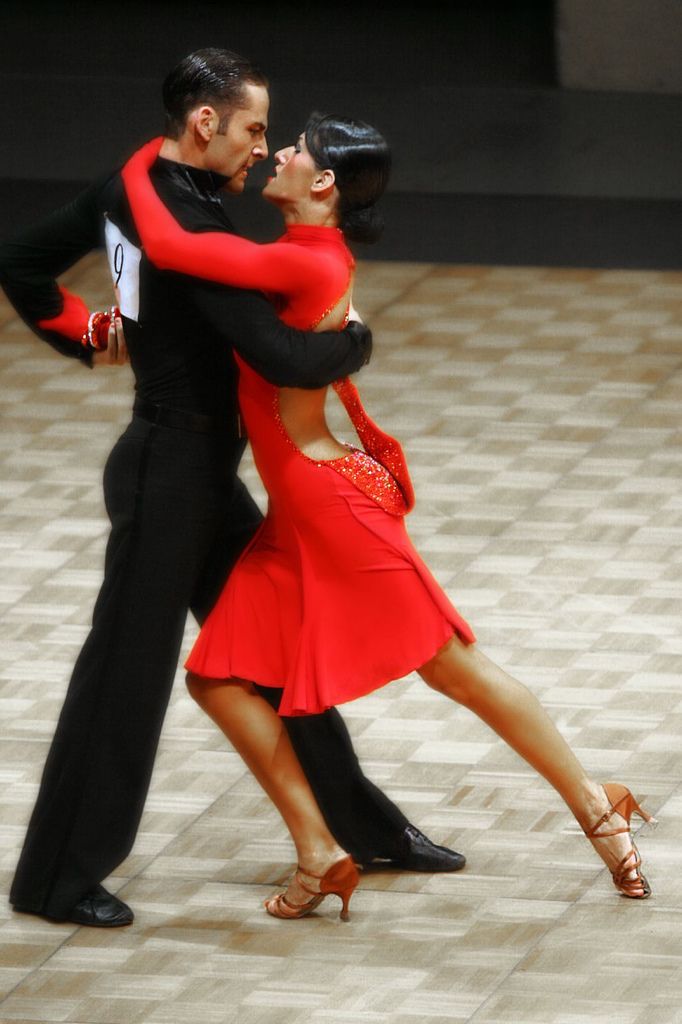 nine0246
nine0246
- Tango is not a dance that can be mastered in an evening or in one lesson. This is what makes it so mesmerizing! There is much to be learned; it can take a lifetime to learn how to dance and understand tango. But don't let this fact put you off, let it inspire you. By learning to dance the tango, you will master the art.
- Learn from different instructors. Don't limit yourself to one teacher. Before you pay him, visit a trial lesson. It may turn out that you do not like his character or style at all.
- Choose instructors who teach in pairs. He will be better able to teach you. Yes, a man can teach you how to lead, but only a woman can teach you how to be the perfect leader. And vice versa.
- Wear comfortable, loose-fitting clothing.
- If you decide to practice Argentine tango, then figure out what is the difference between Apilado, Salon and staged (Fantasy tango) tango. nine0246
- Your instructor must be experienced in all three styles of Argentine tango: Salon, Apilado (or Milonguero) and Tango Nuevo. If he's only into one style, better find another one. Why should they decide which style you will dance in if you yourself have not yet figured out which one you like best?
Warnings
- If your instructor is not a great dancer, stay away from him.
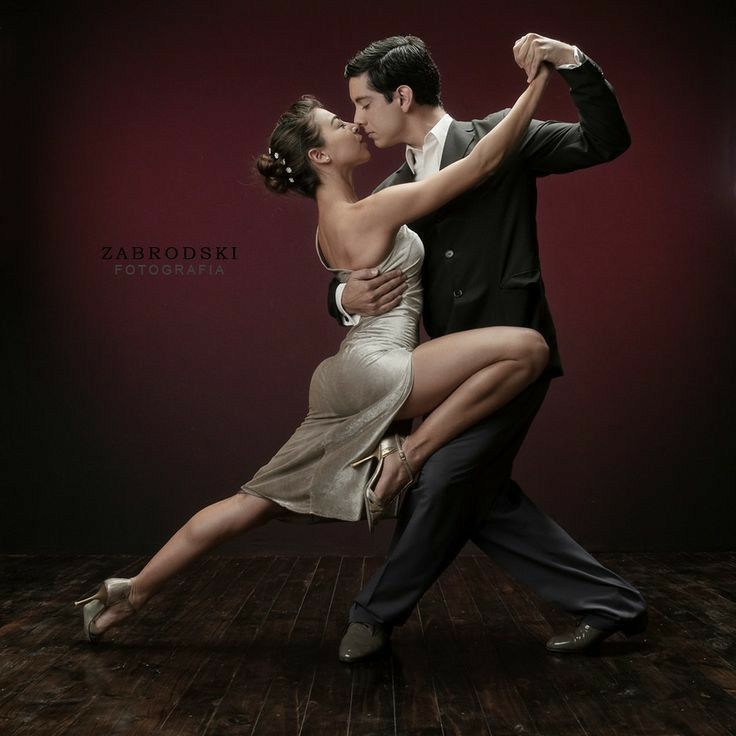 You need to learn only from the best, and not from amateurs who do not dance, but only teach, or who do not create ease and fun from learning. nine0246
You need to learn only from the best, and not from amateurs who do not dance, but only teach, or who do not create ease and fun from learning. nine0246
Tango has always attracted people with its passion. This dance helps to express all the feelings hidden deep inside that are not found in everyday life. But to achieve a positive effect, learning to tango requires hard, selfless work.
Where to start
Tango is built on the relationship between a man and a woman, their passion, conflicts and reconciliations, jealousy, hatred and love. Each instructor has his own vision of dance, so it is better to study with one, rather than with several teachers. There are no age restrictions here, tango is the best dance for everyone - it would be perseverance and desire. nine0003
First Moves
Let's hear how an experienced instructor teaches women how to do the first moves: “Pull your arm forward as if it starts from the ear.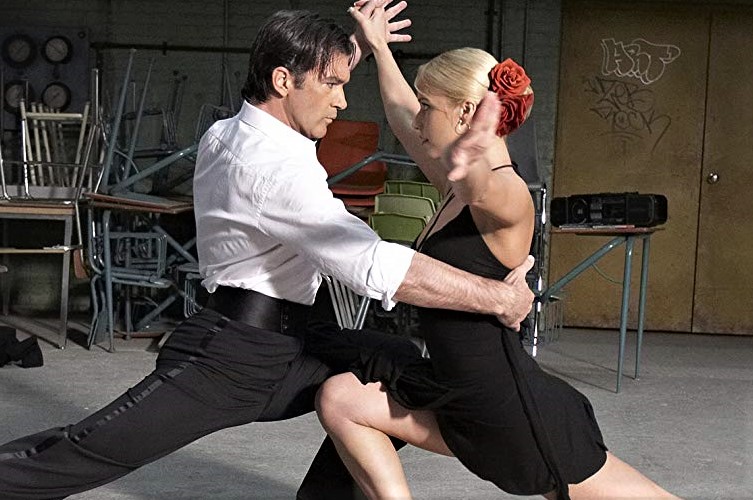 Then take a step so that the leg starts as if from the chest. The very first step is taken, then the basic elements are taught: pivots, moving in step, etc. These elements are not easy in themselves, but who said that it would be easy. Also, literally from the first lessons, you need to learn how to properly distribute your own weight. nine0003
Then take a step so that the leg starts as if from the chest. The very first step is taken, then the basic elements are taught: pivots, moving in step, etc. These elements are not easy in themselves, but who said that it would be easy. Also, literally from the first lessons, you need to learn how to properly distribute your own weight. nine0003
Differences of tango from other dances
No matter how sensual and temperamental tango is, there is always a note of sadness in it. Unlike the planned repetitions of the rhythm of the waltz, in the tango there are accelerations and decelerations - everything that drastically changes the rhythm of the dance. When sharp movements organically alternate with slow ones, this creates a magnificent, expressive entourage for the dance. A man and a woman are separated by a dance, each of them performs different steps, shows different gestures.
Everyone can share the joy and passion of tango. Born in the poor quarters of Buenos Aires, this dance has gained popularity all over the world, and almost every city in Russia has professional sections and tango instructors.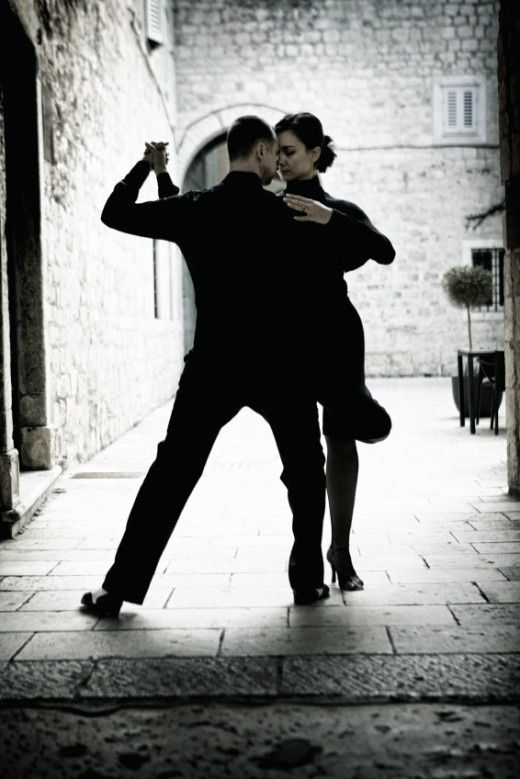 In general, the essence of tango is that it doesn’t matter where, the main thing is HOW!
In general, the essence of tango is that it doesn’t matter where, the main thing is HOW!
Tango appeared in Argentina at the end XIX century. It was born from a mixture of local milonga rhythms and the music of European immigrants, which sounded in the port taverns of Buenos Aires. At the beginning In the 20th century, tango came to Europe, where it made a splash in fashionable salons. At the same time, this dance was declared obscene by the Catholic Church and banned by the Archbishop of Paris. nine0003
No other dance has such a distinct rhythm. In addition, the alternating slow-fast rhythm of the tango allows the dancer to control his body and therefore elegantly move the center of gravity. To dance tango well, count the steps as follows: the slow part lasts two measures, the fast one - one.
Forward
Forward movement is the main figure of tango. The movement of the legs is easy to learn, under the only condition: it is good to count - slowly, slowly, quickly, quickly, slowly.